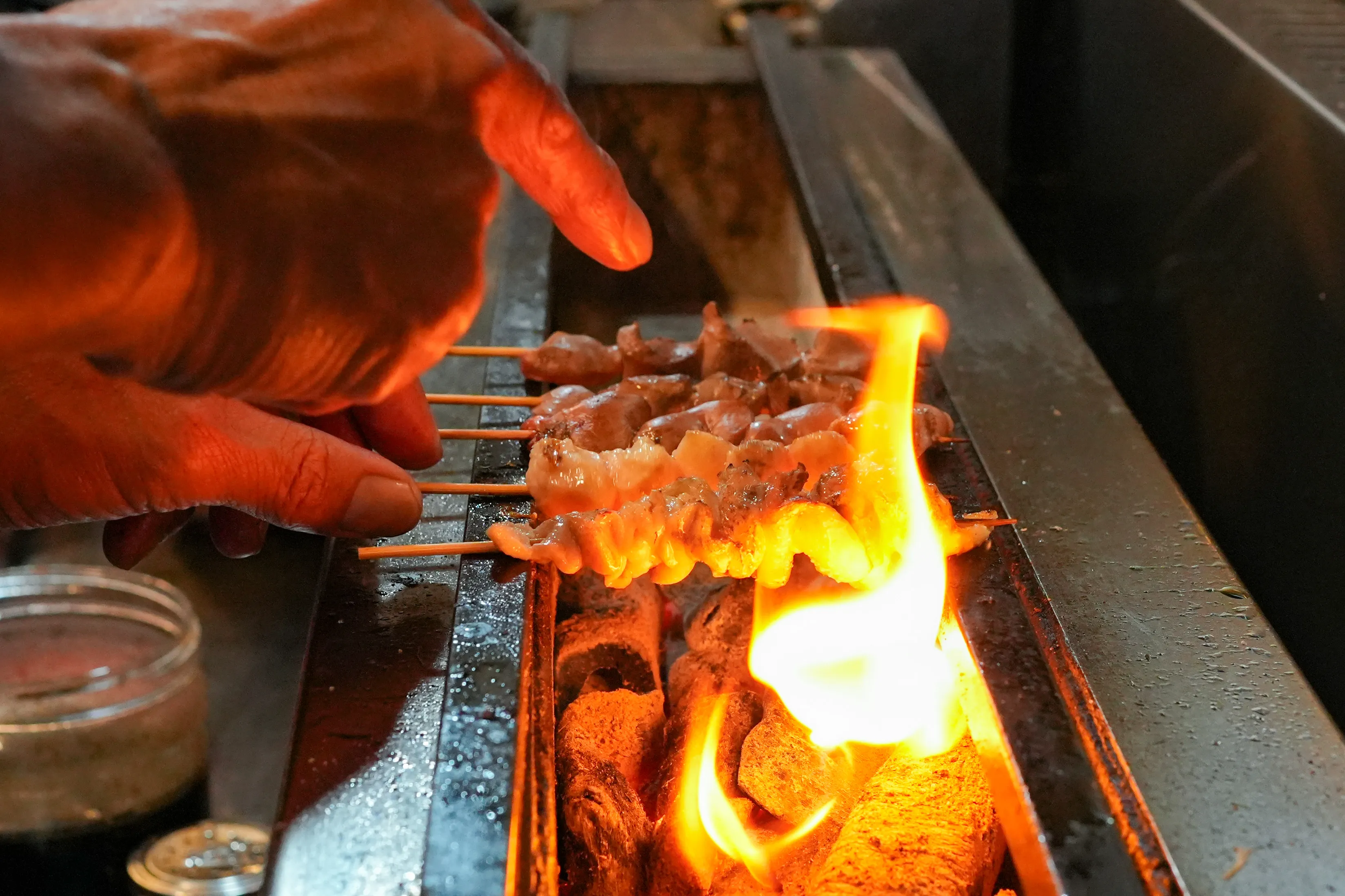Lesson Report: One-Week Yakitori Course
Jun 9, 2024
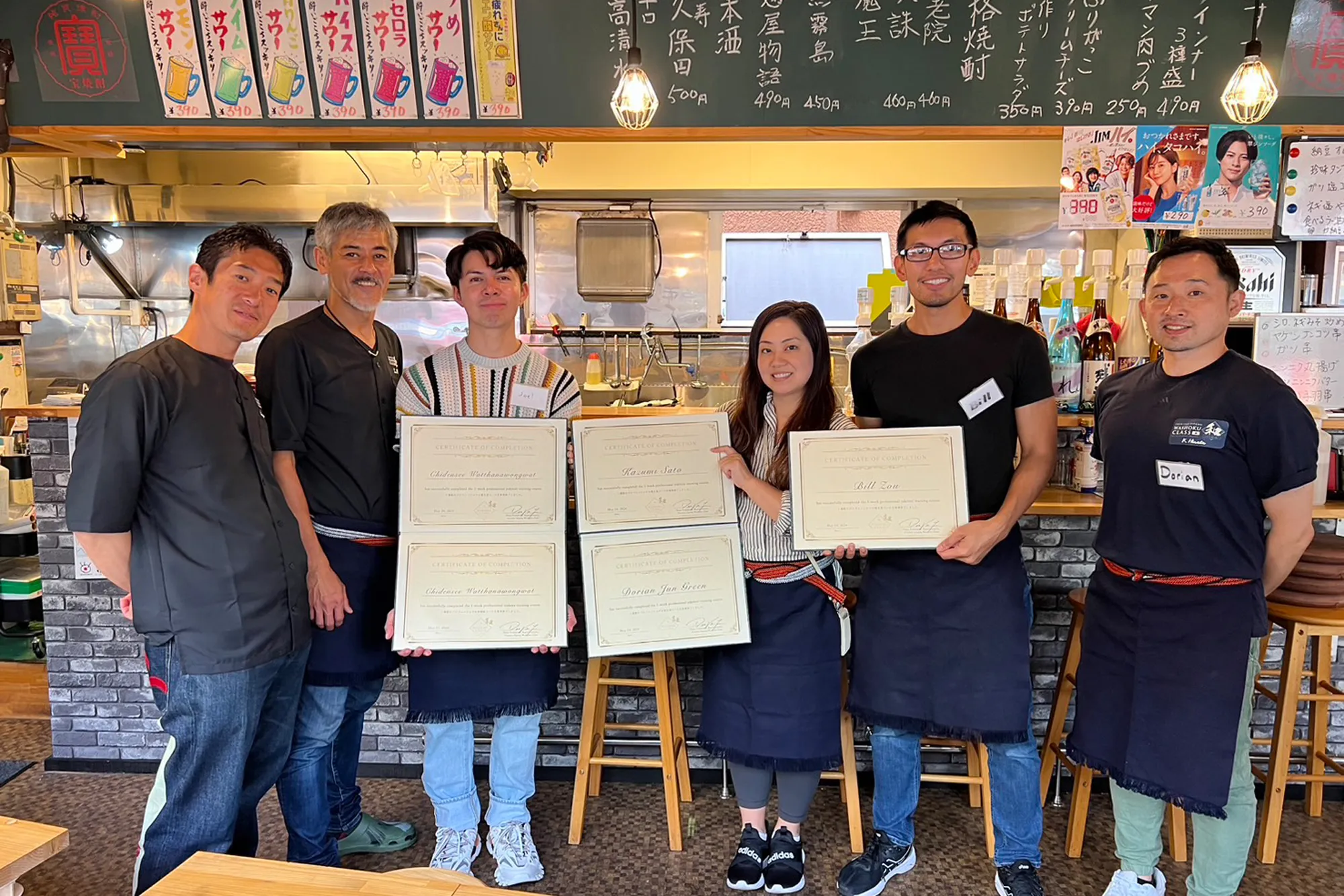
This article highlights the 1-Week Yakitori Course held in May. We are pleased to announce that the course reached its maximum capacity of four students, Joel san, Bill san, Kazumi san, and Dorian san. All of them are successful restaurant owners and chefs who are planning to launch new restaurant projects in the United States in the near future.
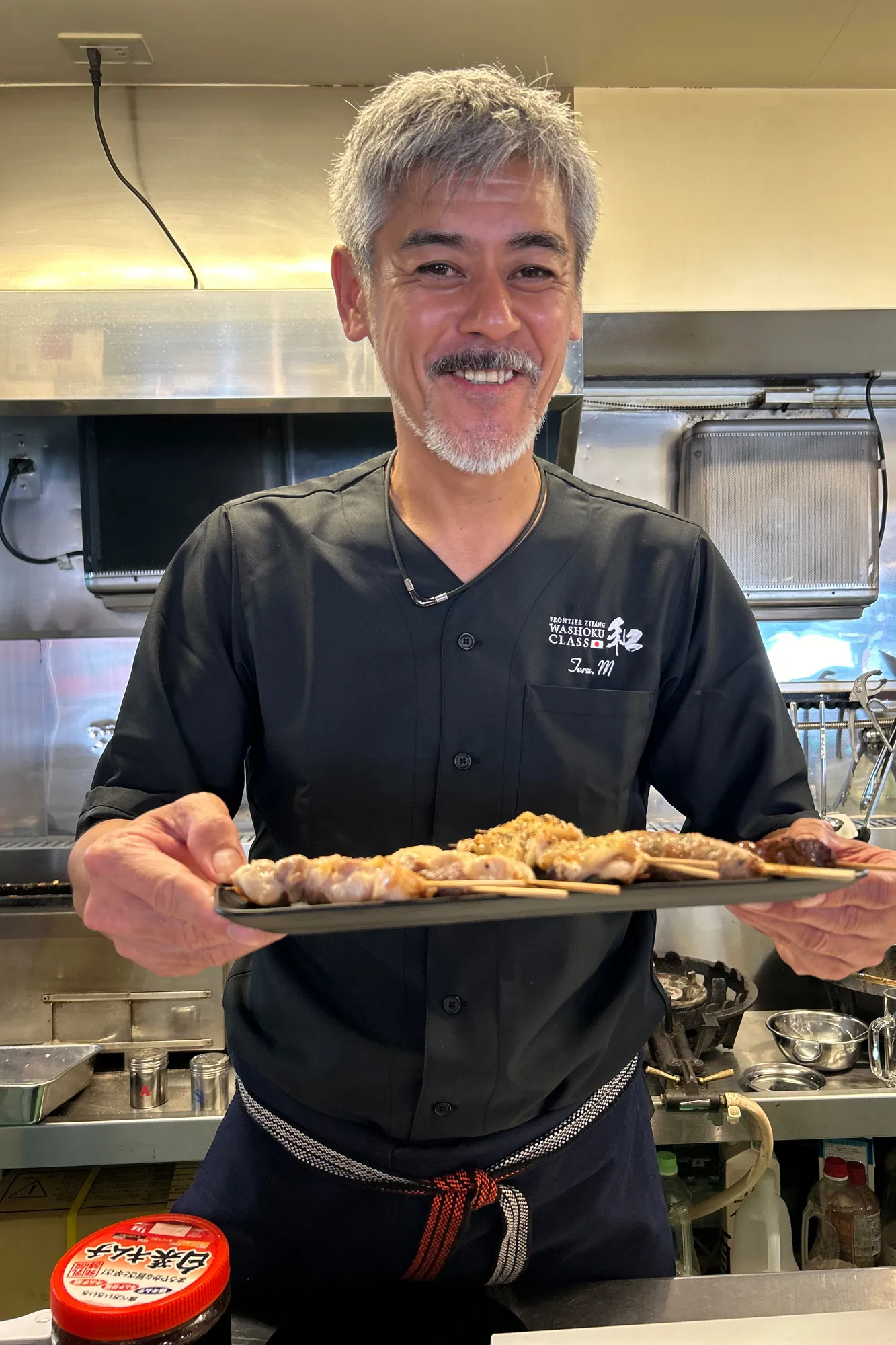
This is our chef instructor of the Yakitori Course, Mr. Teruhiko Maita. He started as a sushi chef. He worked in sushi for ten years before becoming a yakitori chef for six years in Asakusa and Ginza, Tokyo. Currently, he successfully operates Tombo, an Aburasoba restaurant, which is one of our partnered ramen restaurant. Leveraging his expertise as a yakitori chef, he introduces charcoal-grilled chicken or beef as ramen toppings, gaining popularity among ramen enthusiasts.

The instructor boasts a diverse culinary background encompassing yakitori, ramen, Japanese cuisine, sushi, izakaya, Western dishes, hotel dining, and Chinese cuisine, but he says that his specialty is yakitori. In his class, he utilizes charcoal for grilling yakitori and shows adept control over the charcoal fire. This is crucial for achieving juicy and flavorful yakitori. It’s the skillful use of charcoal that truly enhances the quality of yakitori. The instructor will impart essential skills to you such as properly arranging charcoals on the stove and managing charcoal fire for different types of meat. This will enable you to create succulent grilled meat regardless of the meat’s price. Additionally, he can teach you popular side dishes served at yakitori restaurants.

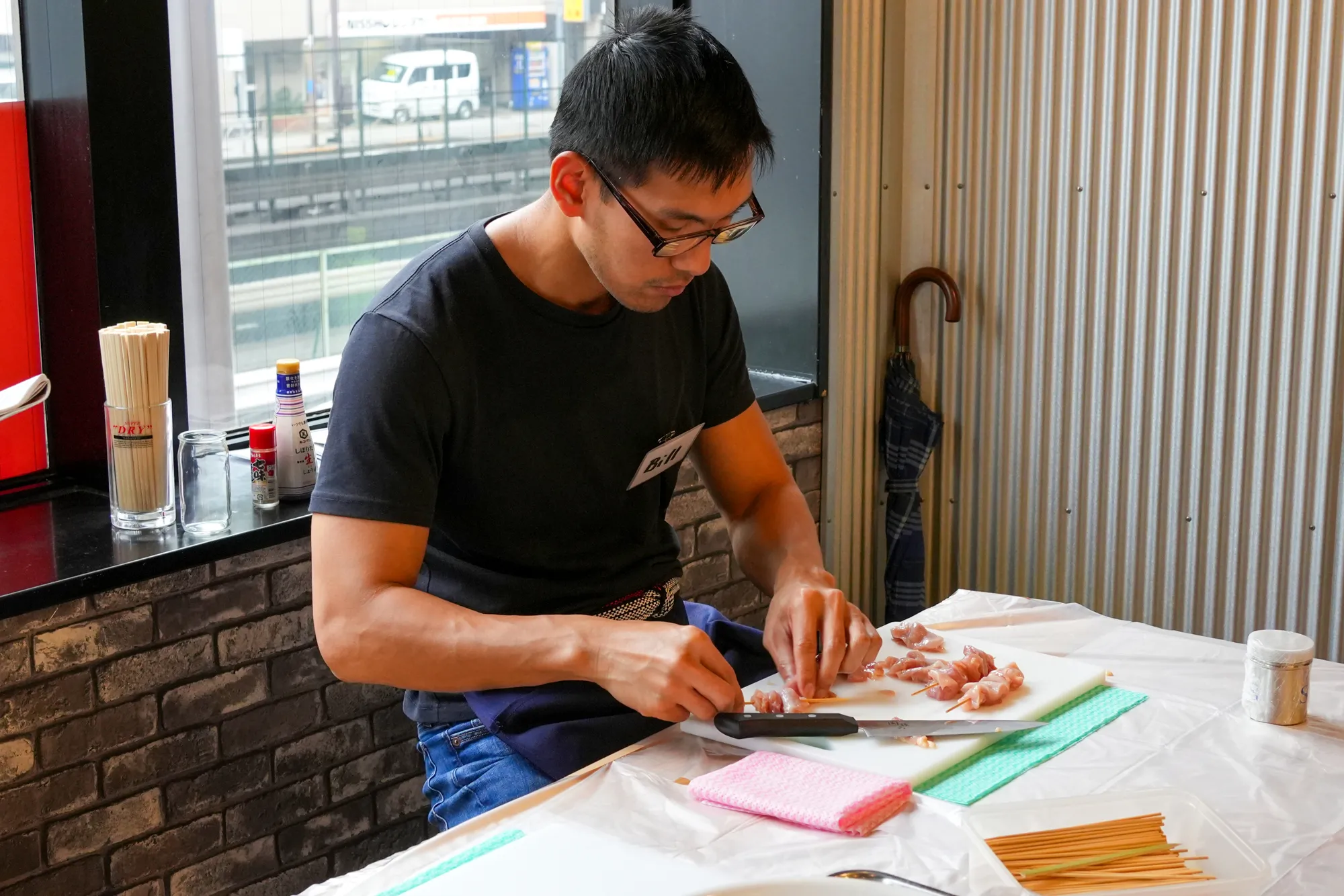
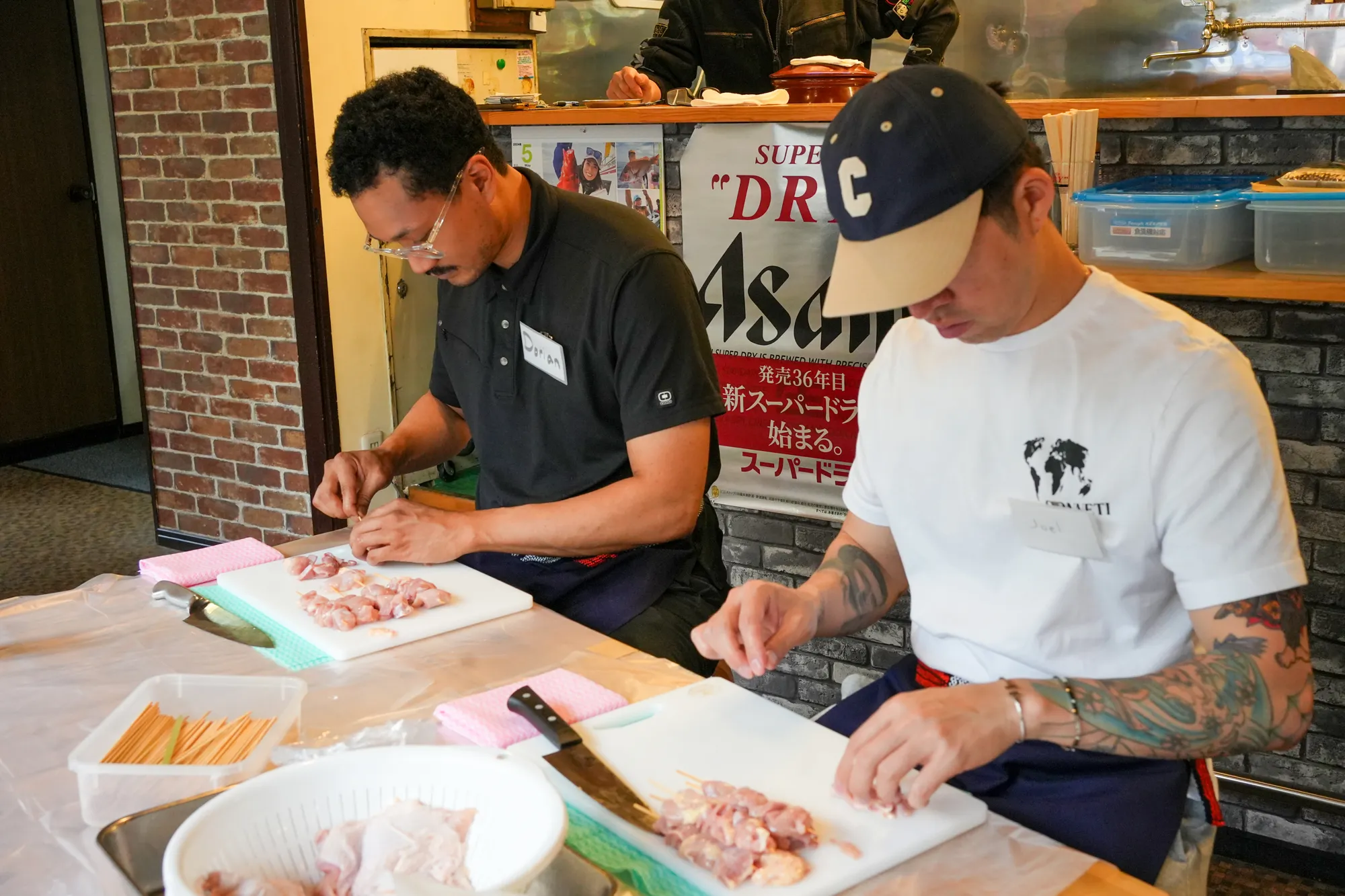
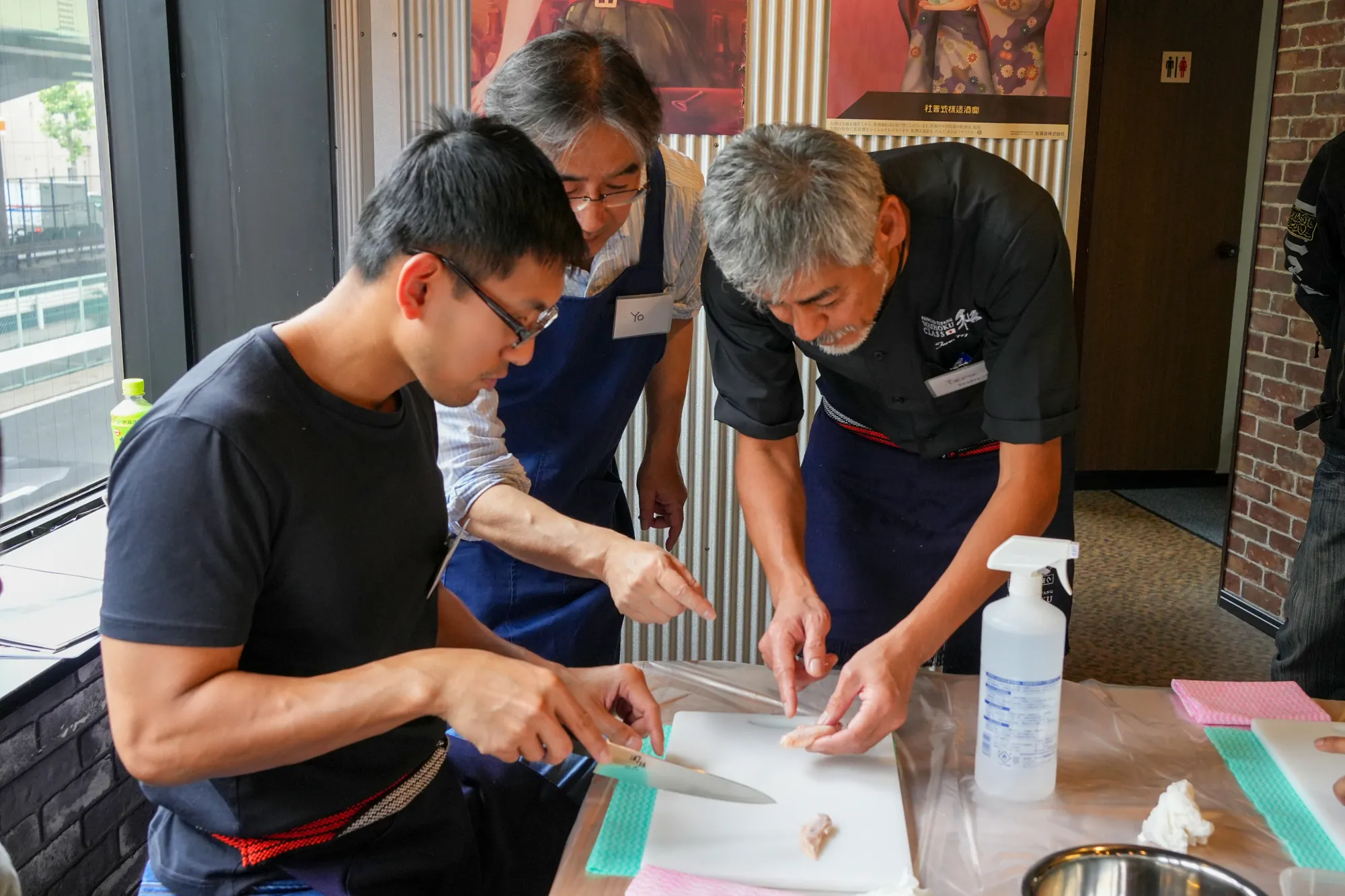
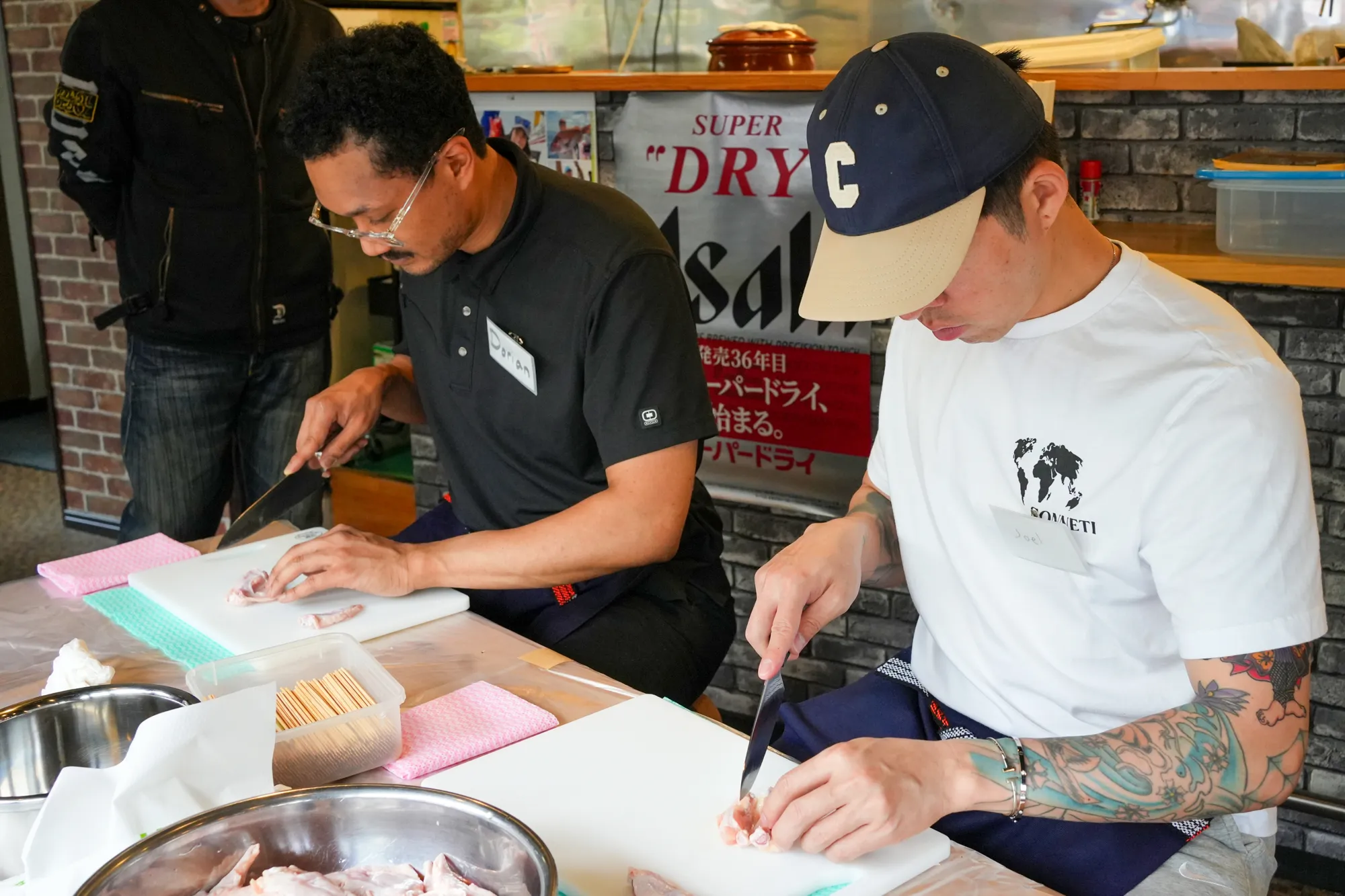
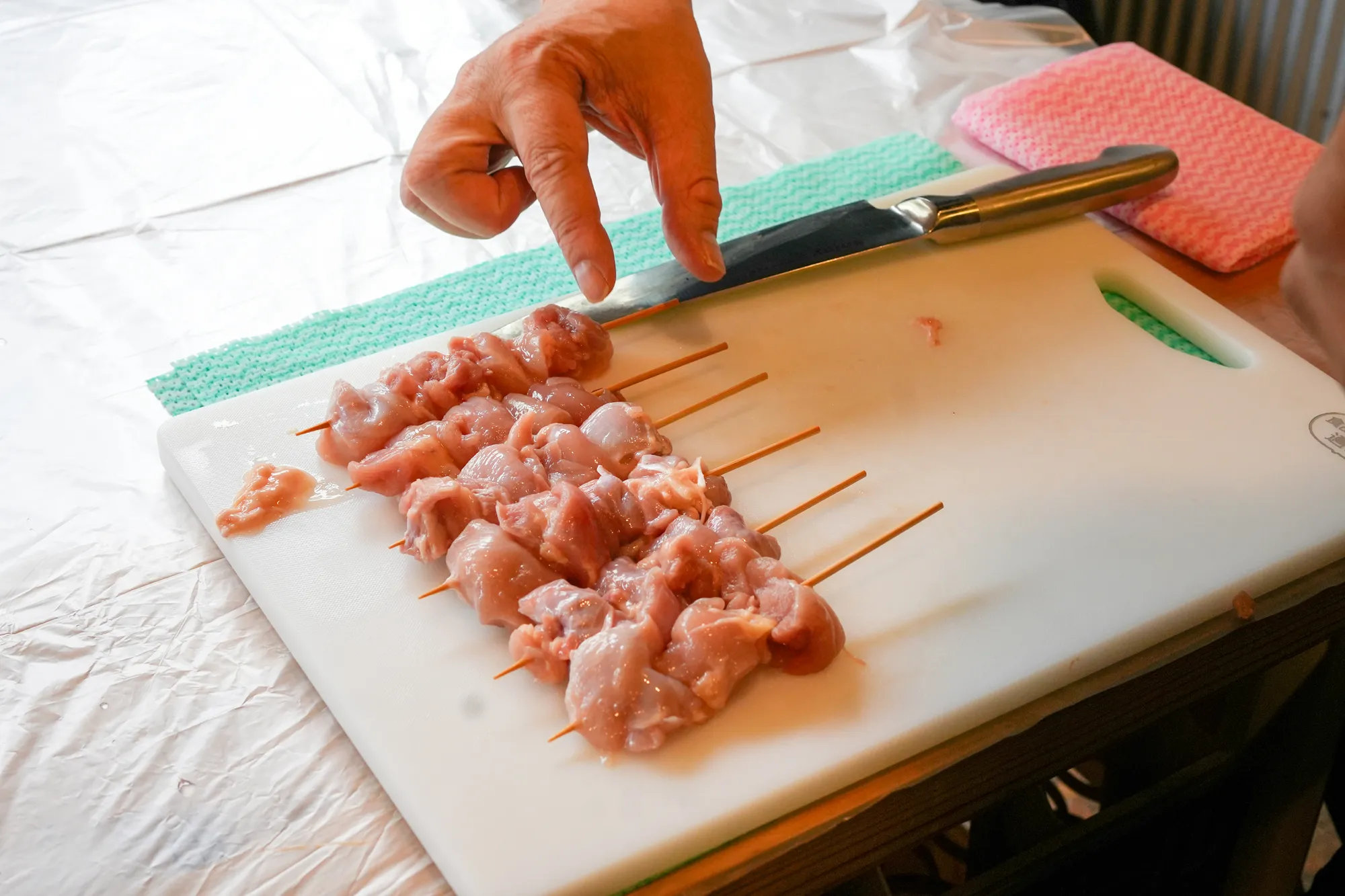
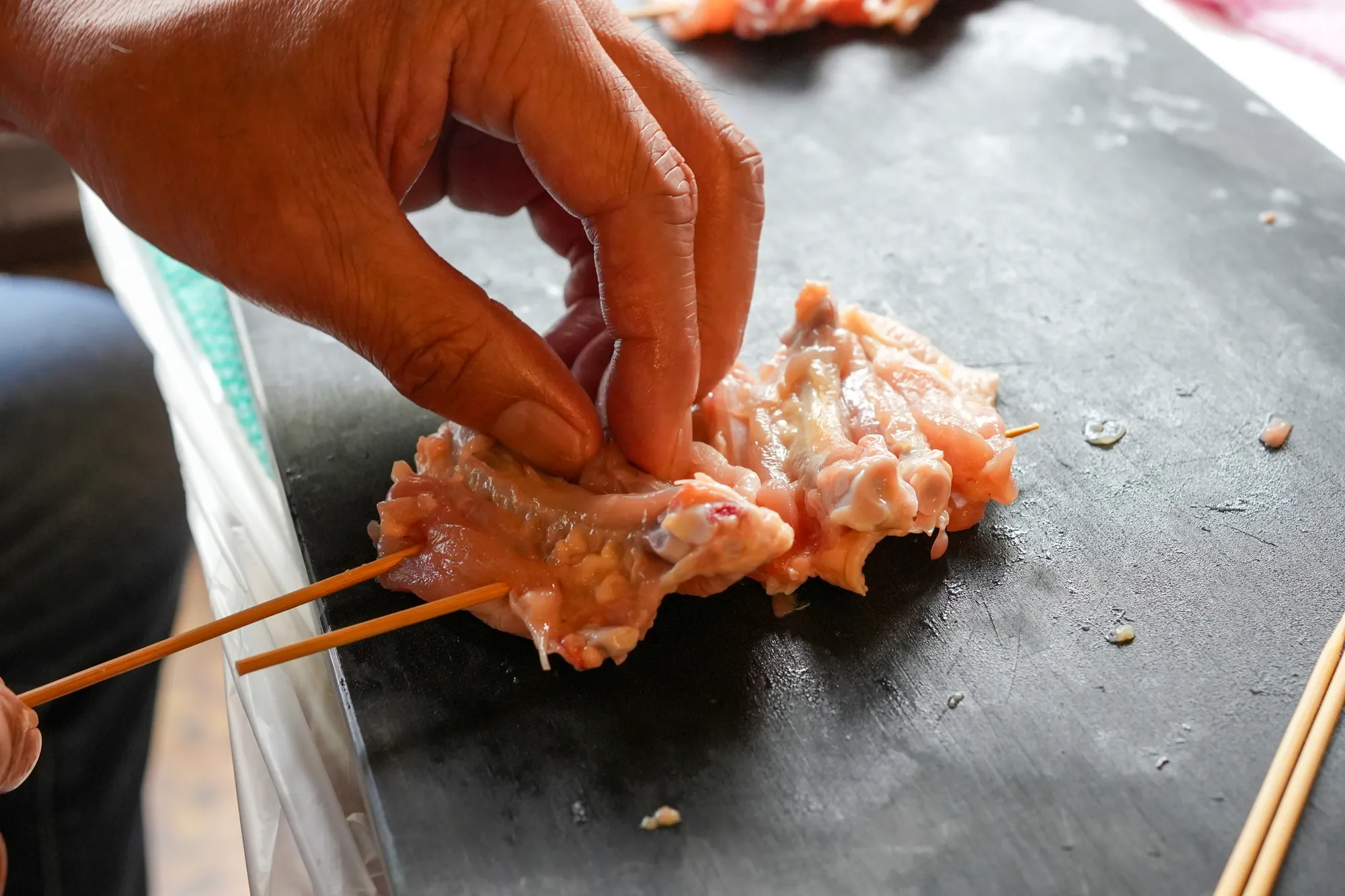


Chicken 1:
‘Momo’ (chicken thigh), Tsu’kune (minced chicken), ‘Tebasaki’ (Chicken wing), and ‘Sasami’ (White breast meat)
On Day 1, the instructor begins by asking the students to cut ‘momo’ (chicken thigh) into pieces and skewer them as they wish. After this initial attempt, the instructor provides feedback to each student and then teaches essential skills for cutting and skewering. These skills include how to cut the meat to the proper size, the correct order for skewering pieces, and techniques to prevent the pieces from spinning on the skewer. Following the instructor’s guidance, the students show improvement in their cutting and skewering techniques, as well as in the appearance of the skewered chicken.

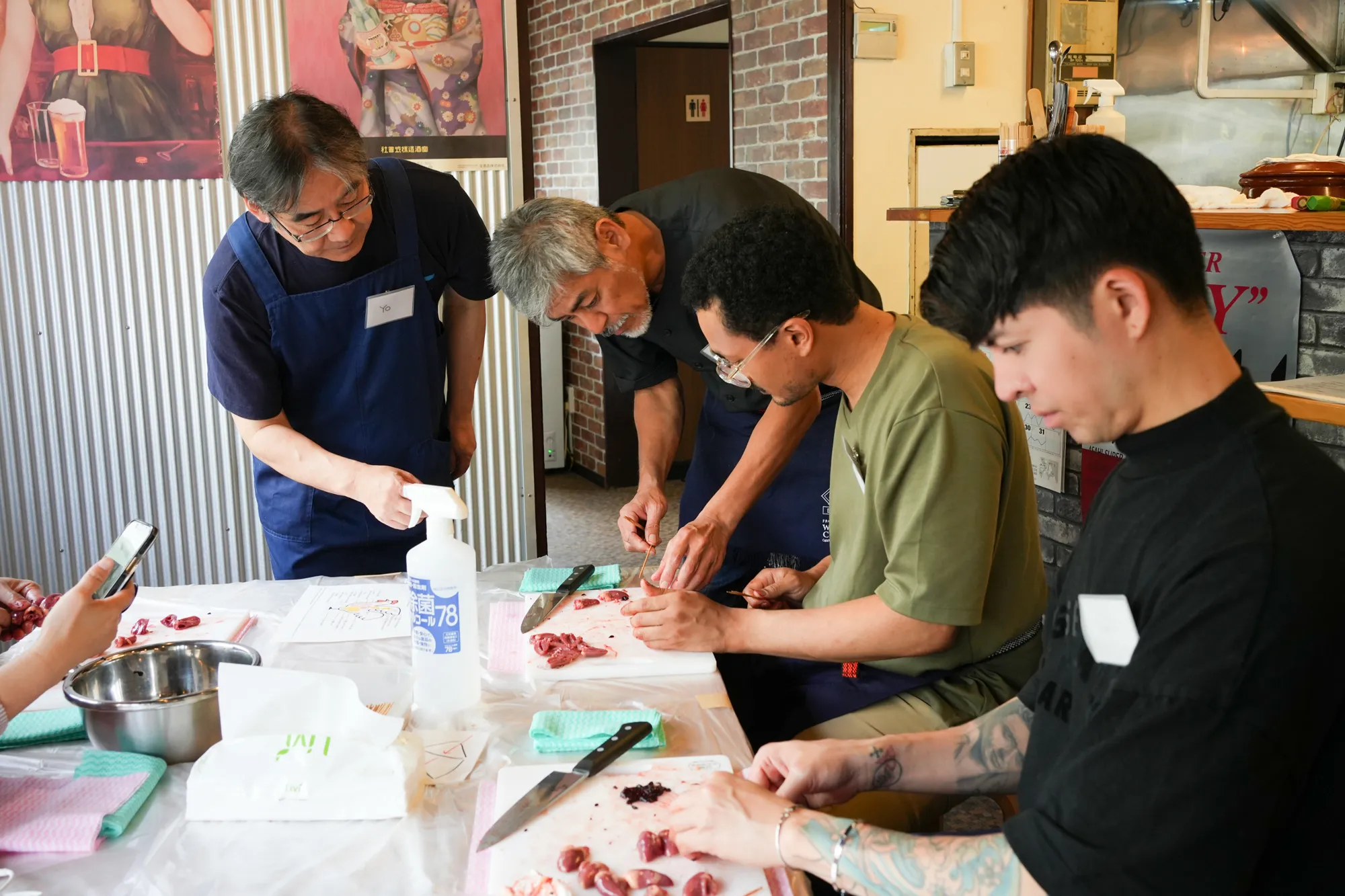

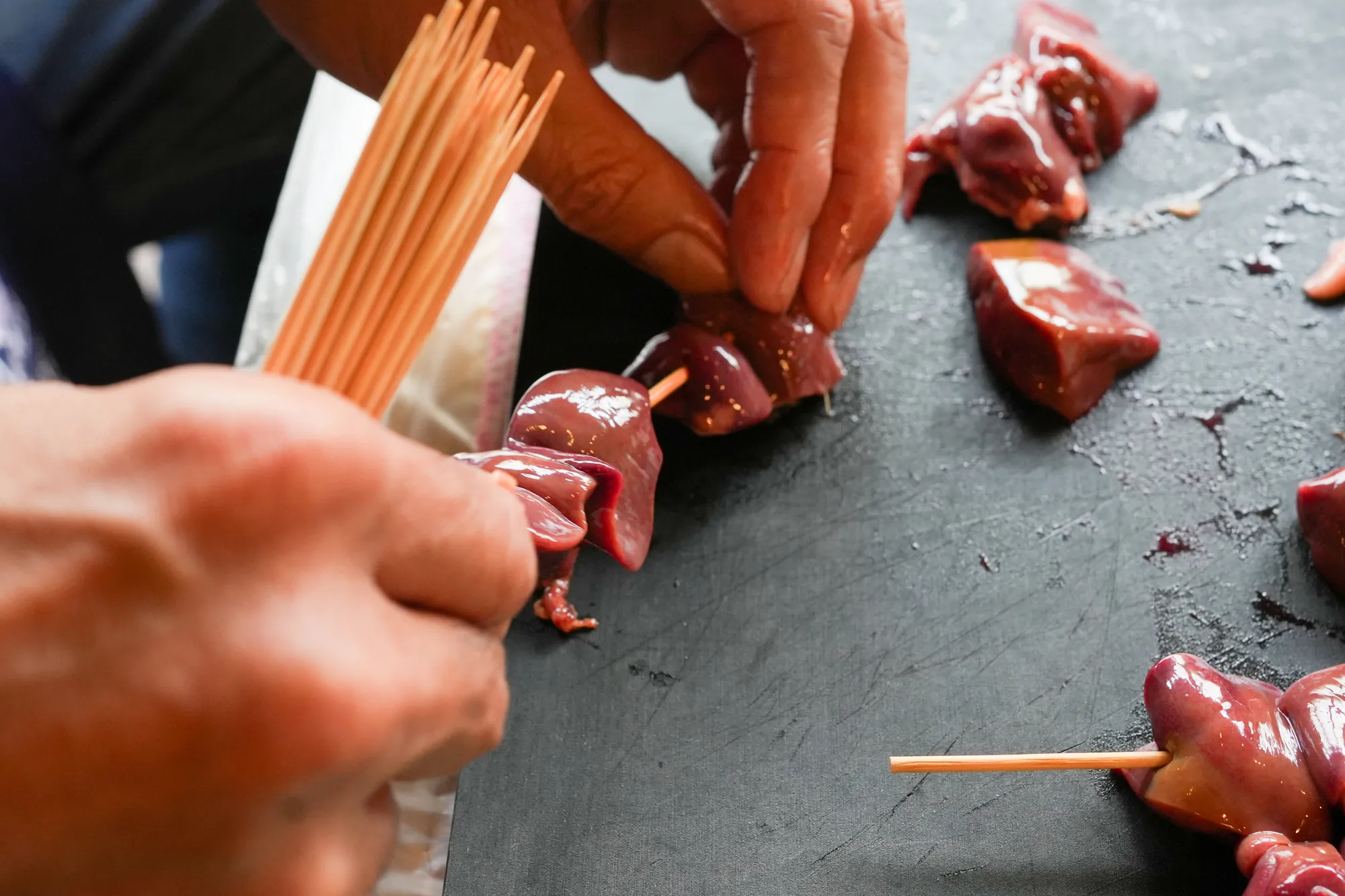
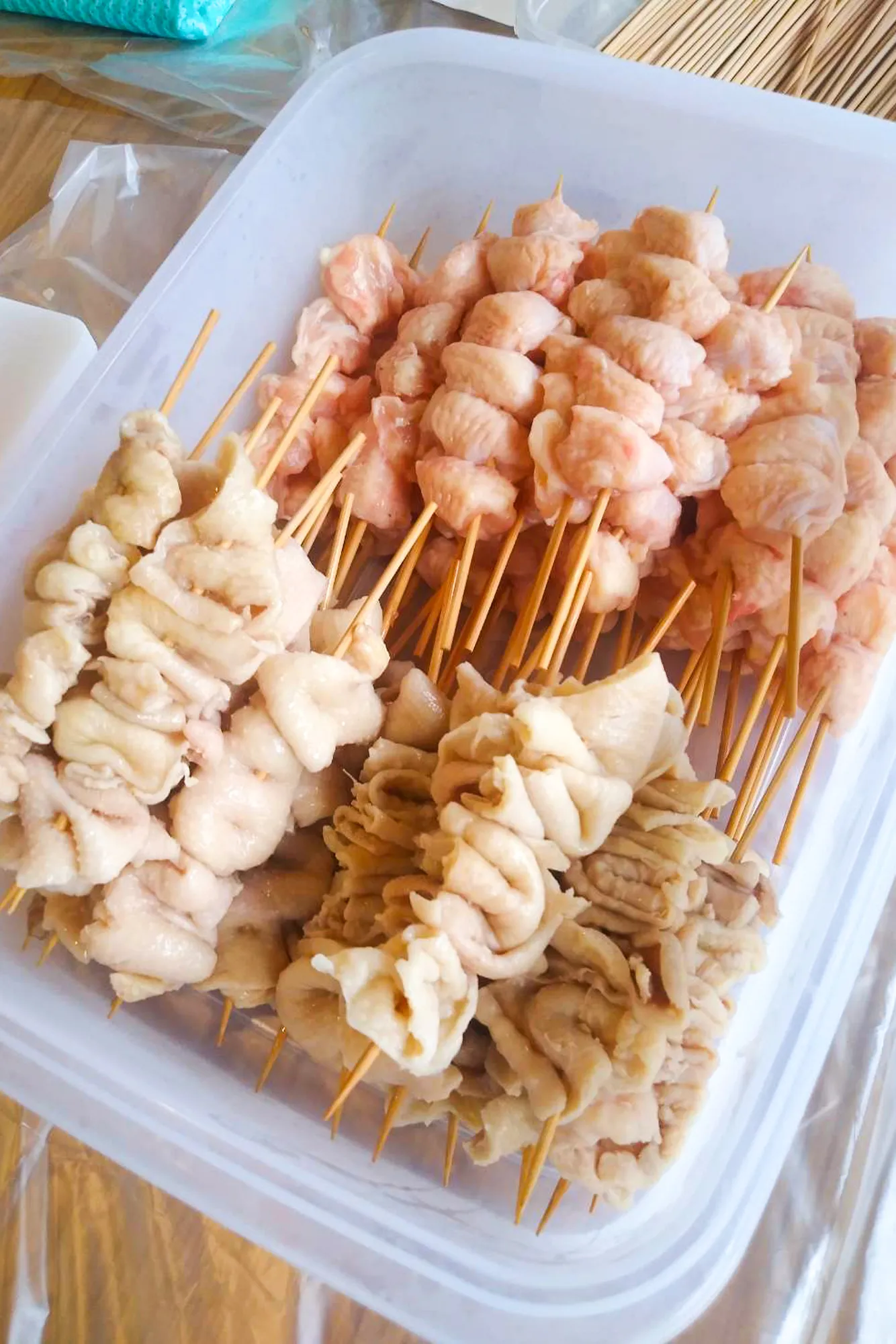
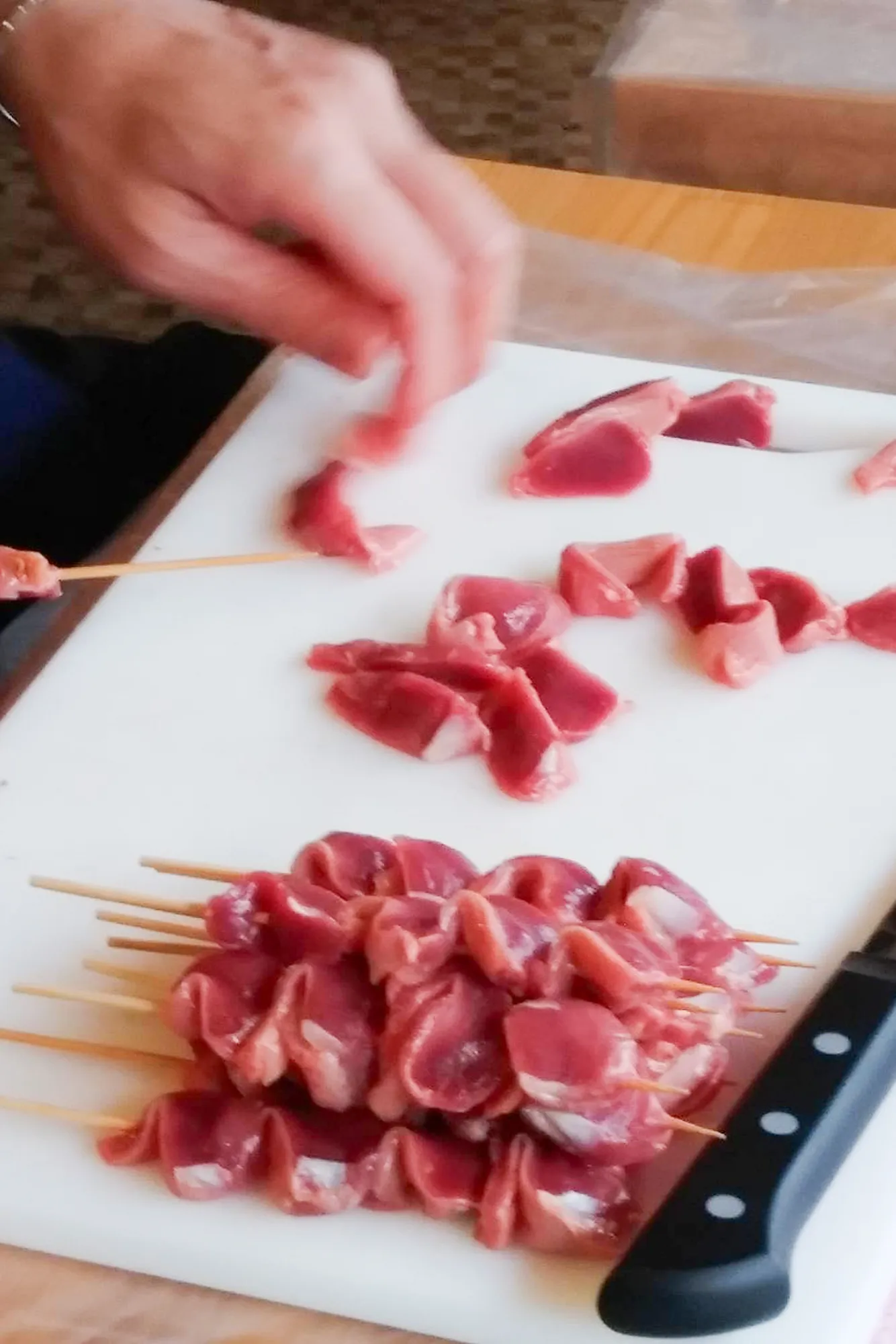
Chicken 2:
‘Kawa’ (skin), ‘Bonjiri’ (meat taken from the tail of the chicken), ‘Sunagimo’ (gizzard), ‘Hatsu’ (heart) and ‘Liver’
These parts, which are often discarded in other countries, are more challenging to cut and skewer compared to momo (chicken thigh). However, because the students learned the basics of cutting and skewering the previous day, they quickly master these skills, surpassing the instructor’s expectations.
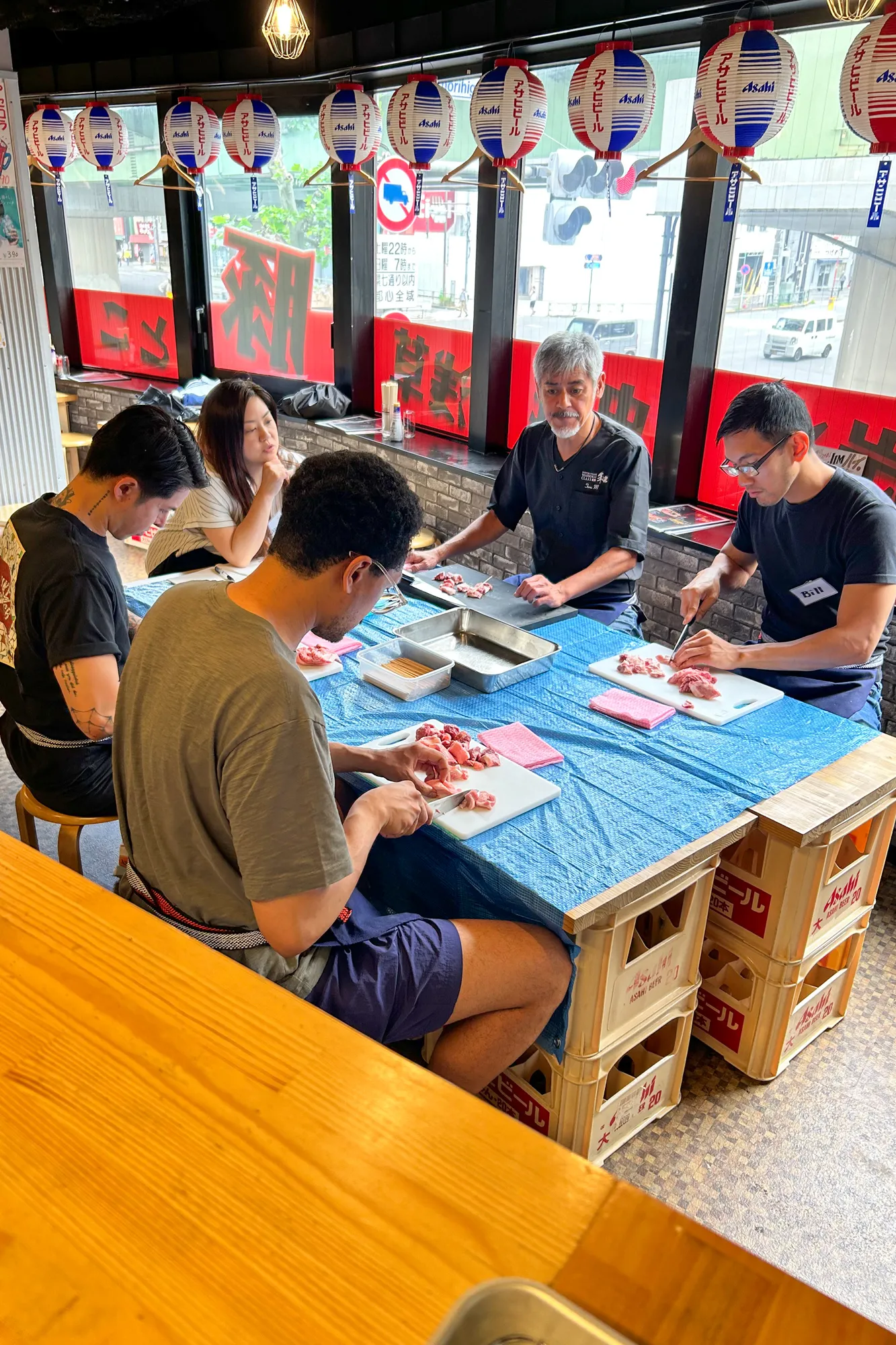
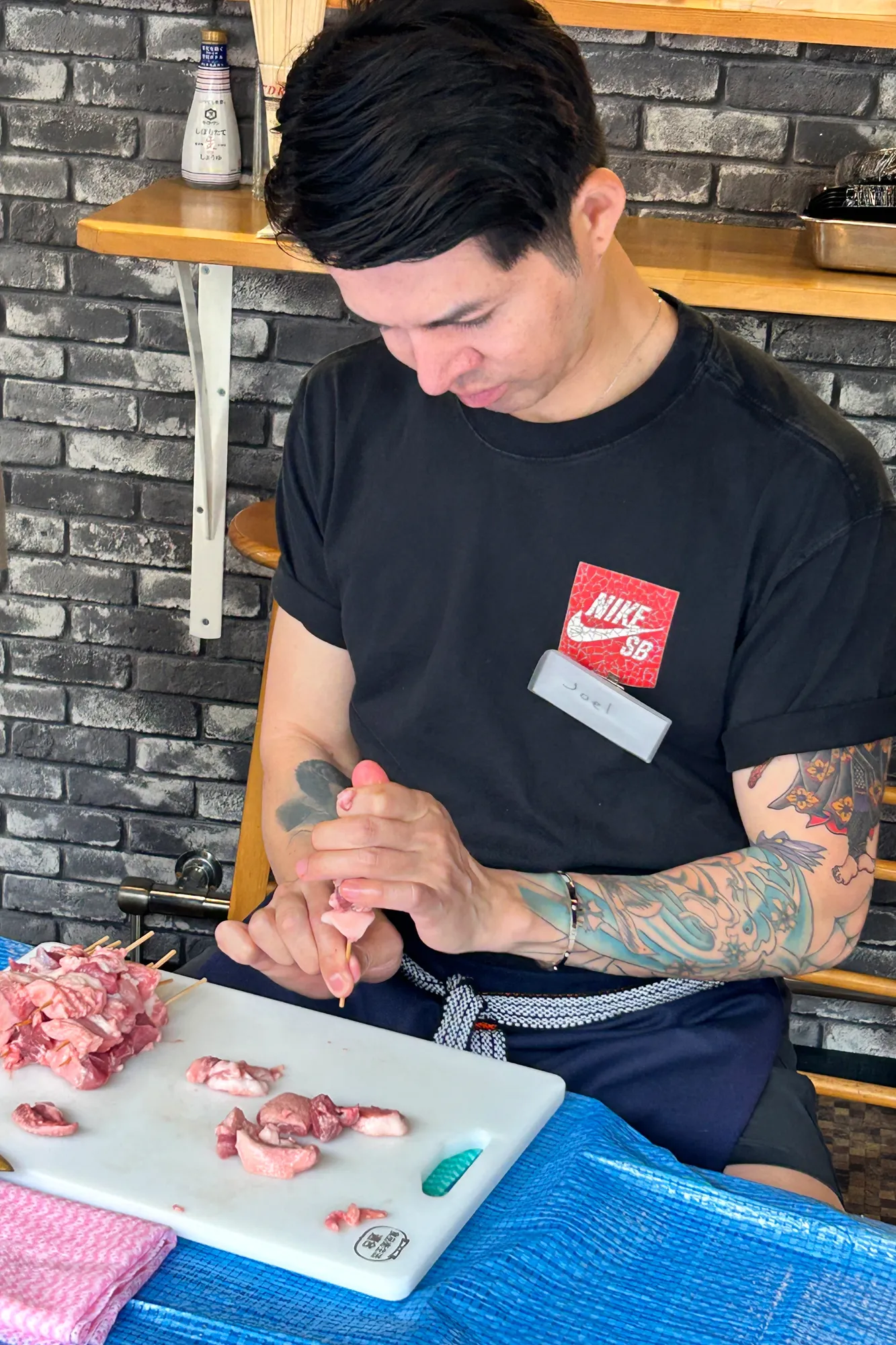
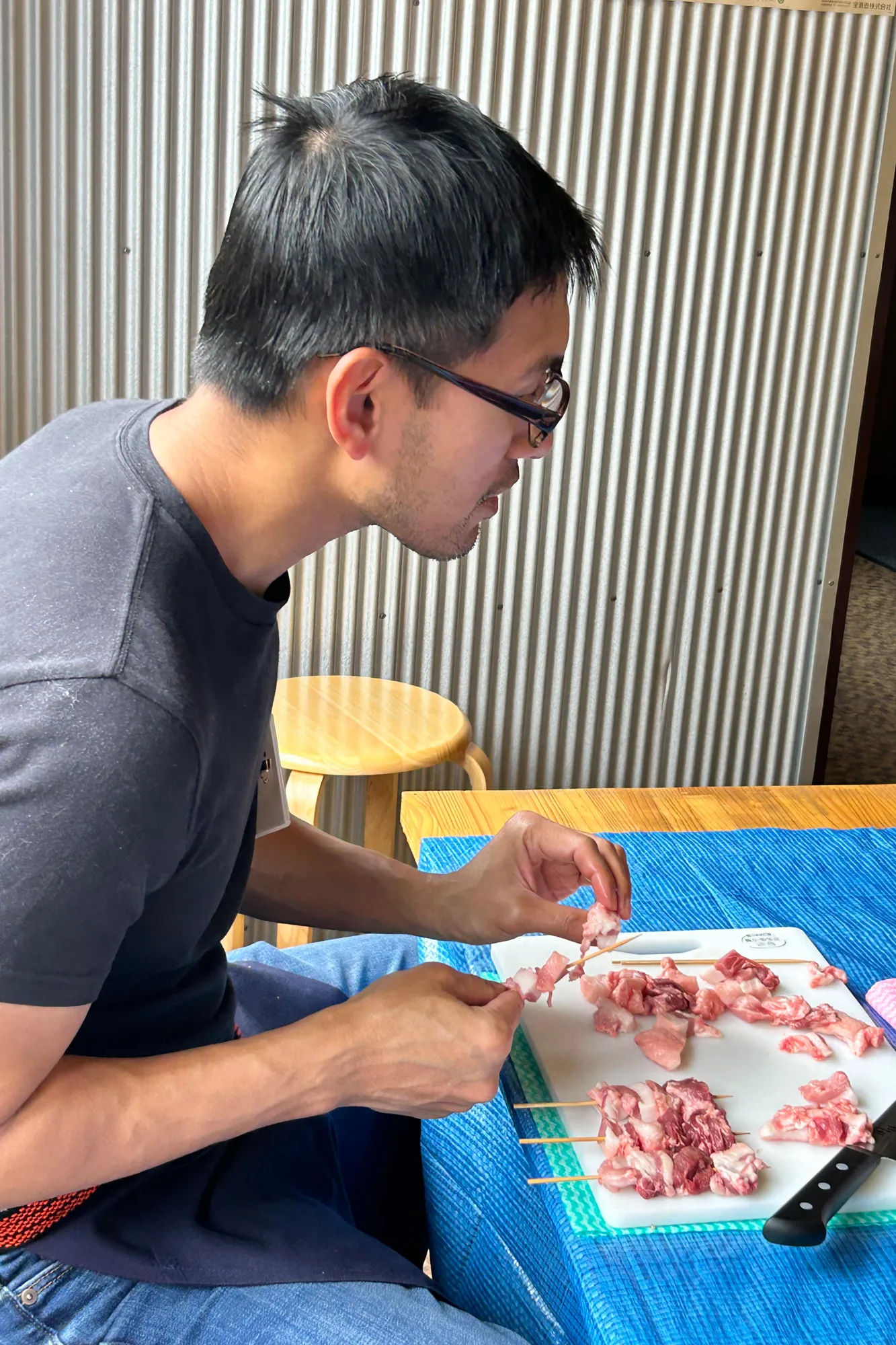
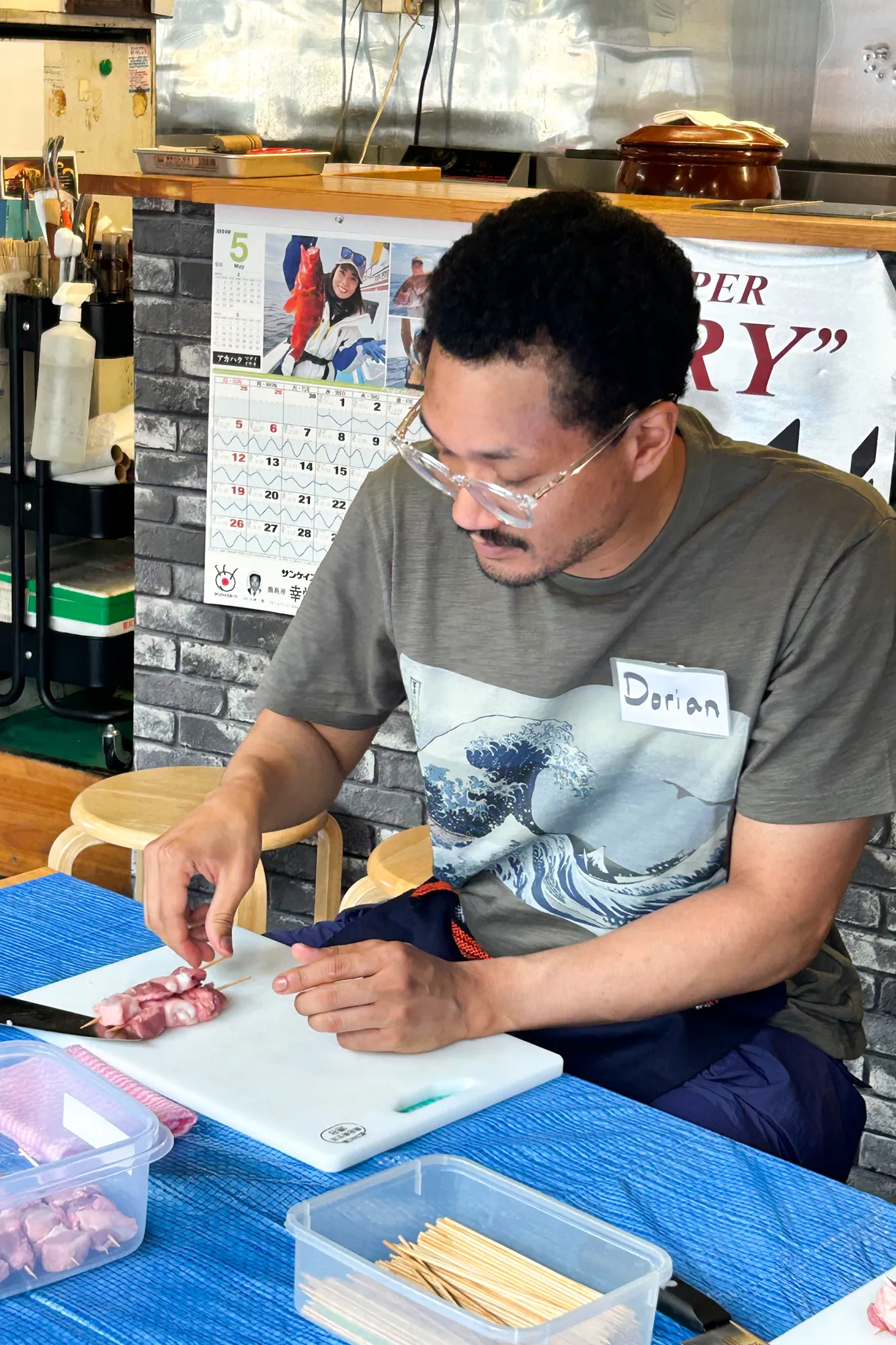
Pork:
‘Bara’ (pork belly), ‘Kashira’ (meat around the temple and cheeks of the pork), ‘Hatsu’ (heart), ‘Gatsu’ (stomach), ‘Shiro’ (meat from the large intestine of the pork) and ‘Tan’ (tongue)
Yakitori means grilled chicken in English, but pork is also a popular ingredient at yakitori restaurants. These cuts of pork are so tough that the students find it slightly more difficult to cut and skewer them. Additionally, the method of cutting and skewering varies depending on the specific part of the meat.
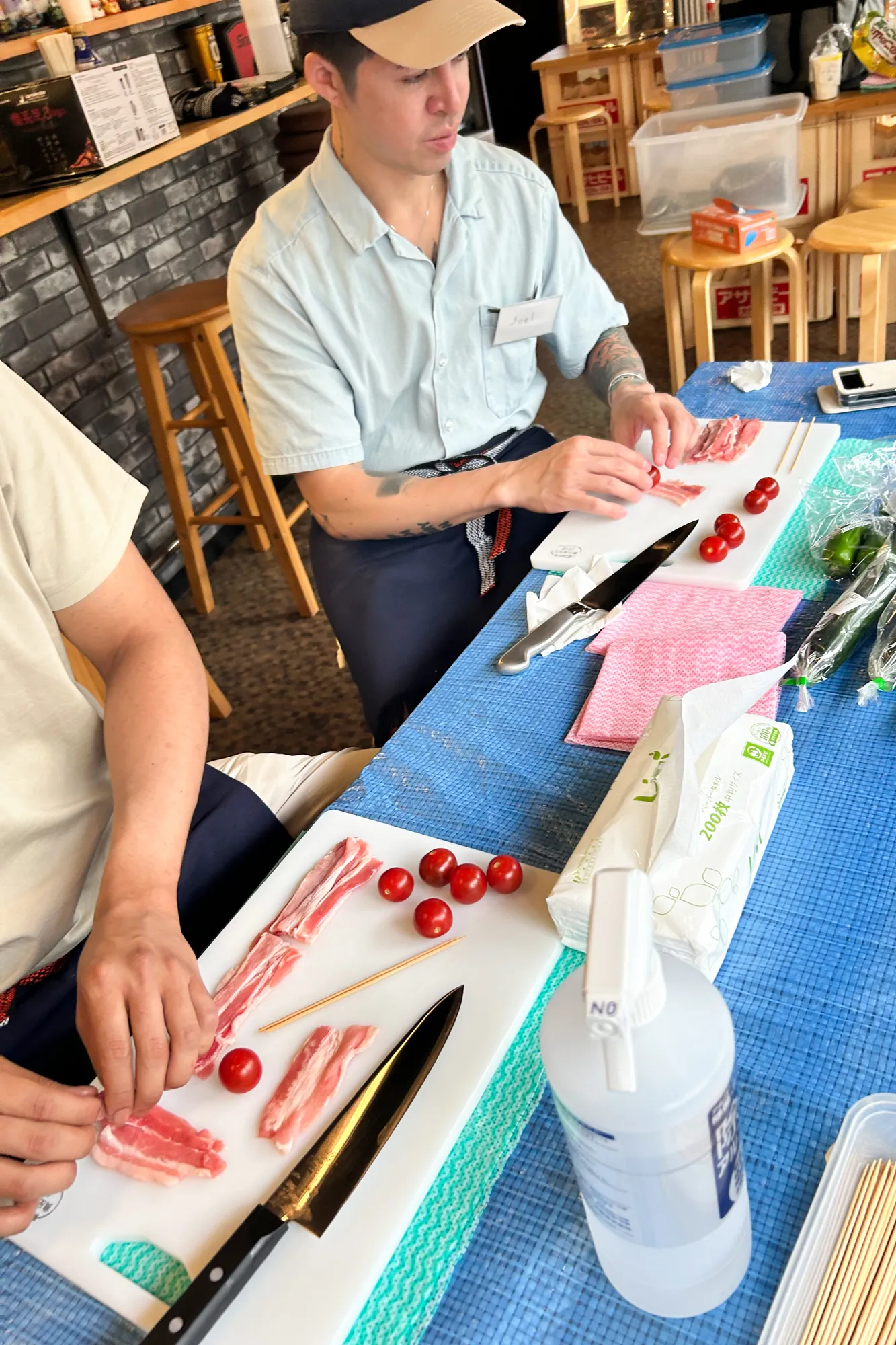
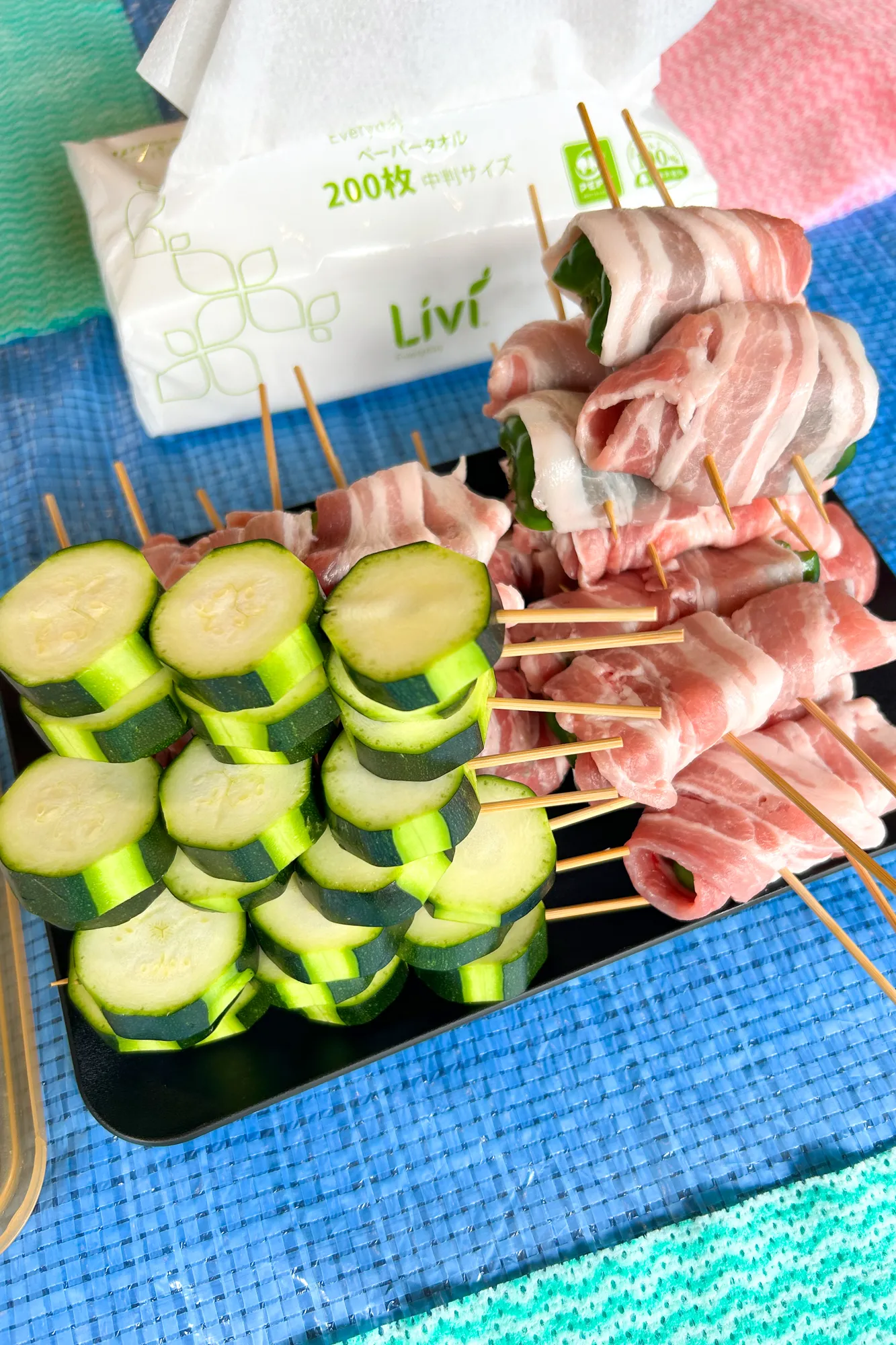
Arrangement:
The instructor also provides the students with ideas for giving typical yakitori a modern and colorful presentation by incorporating cheese and vegetables such as cherry tomatoes, green peppers, and zucchini. Additionally, they practice making negima (skewered grilled chicken with green onion or scallion) extensively.
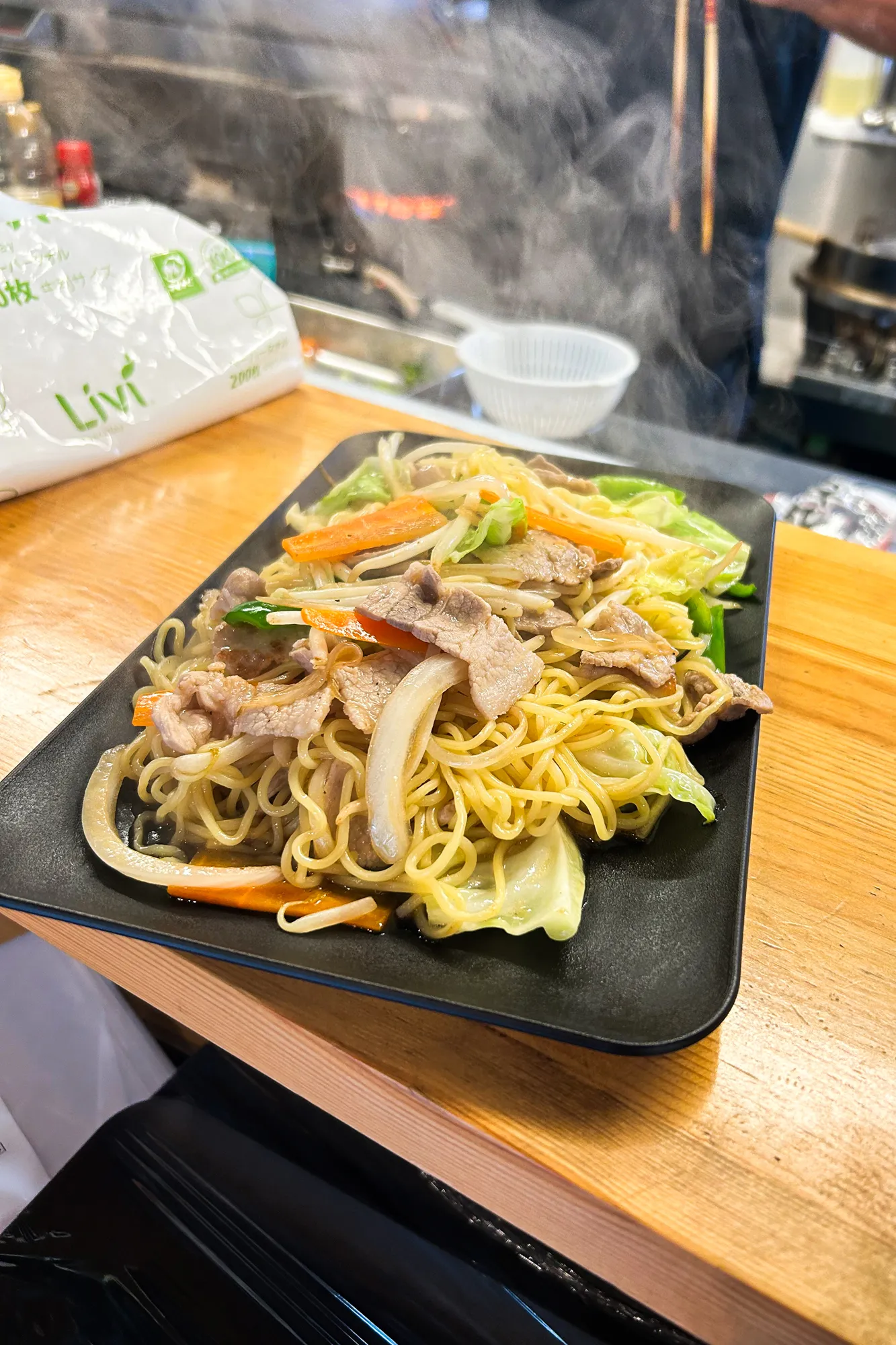
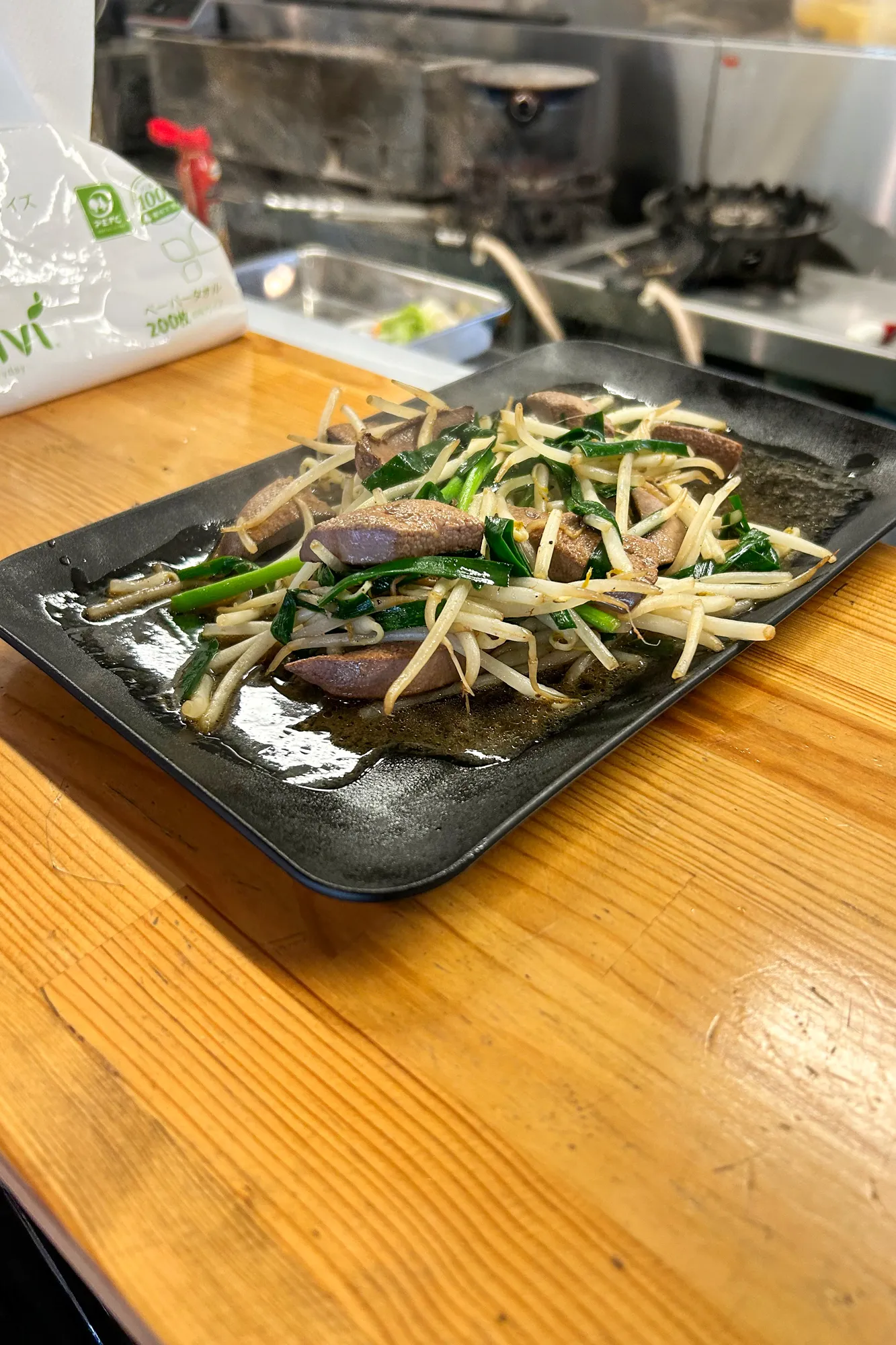
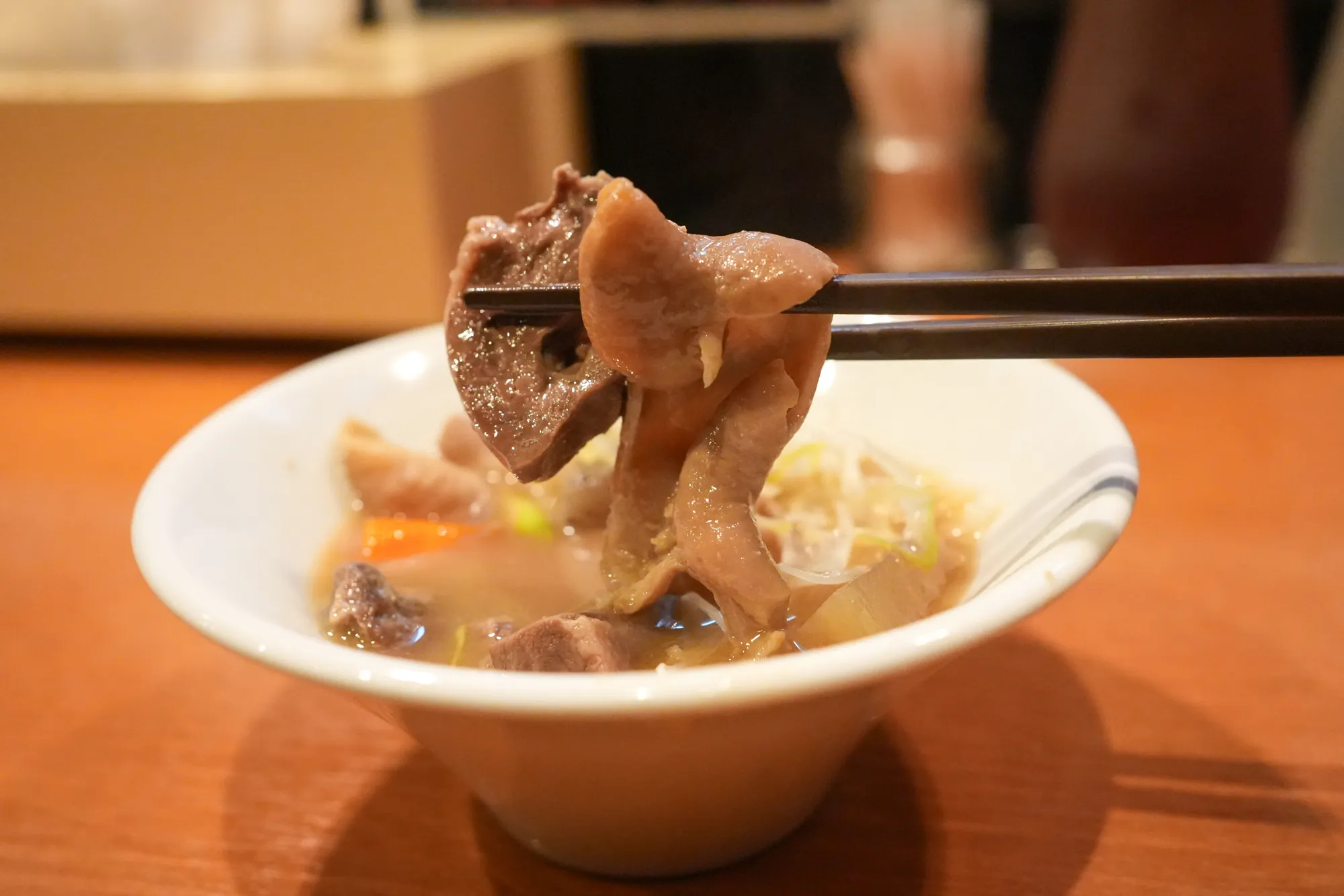
Side dishes:
Since yakitori takes time to grill after an order is placed, it is beneficial to offer quick side dishes that customers can enjoy while waiting. In the course, the instructor demonstrates dishes such as ‘yakisoba’ (fried noodles), ‘nirarebaitame’ (sautéed liver with Chinese chives), and ‘motsu nikomi’ (stewed giblets).
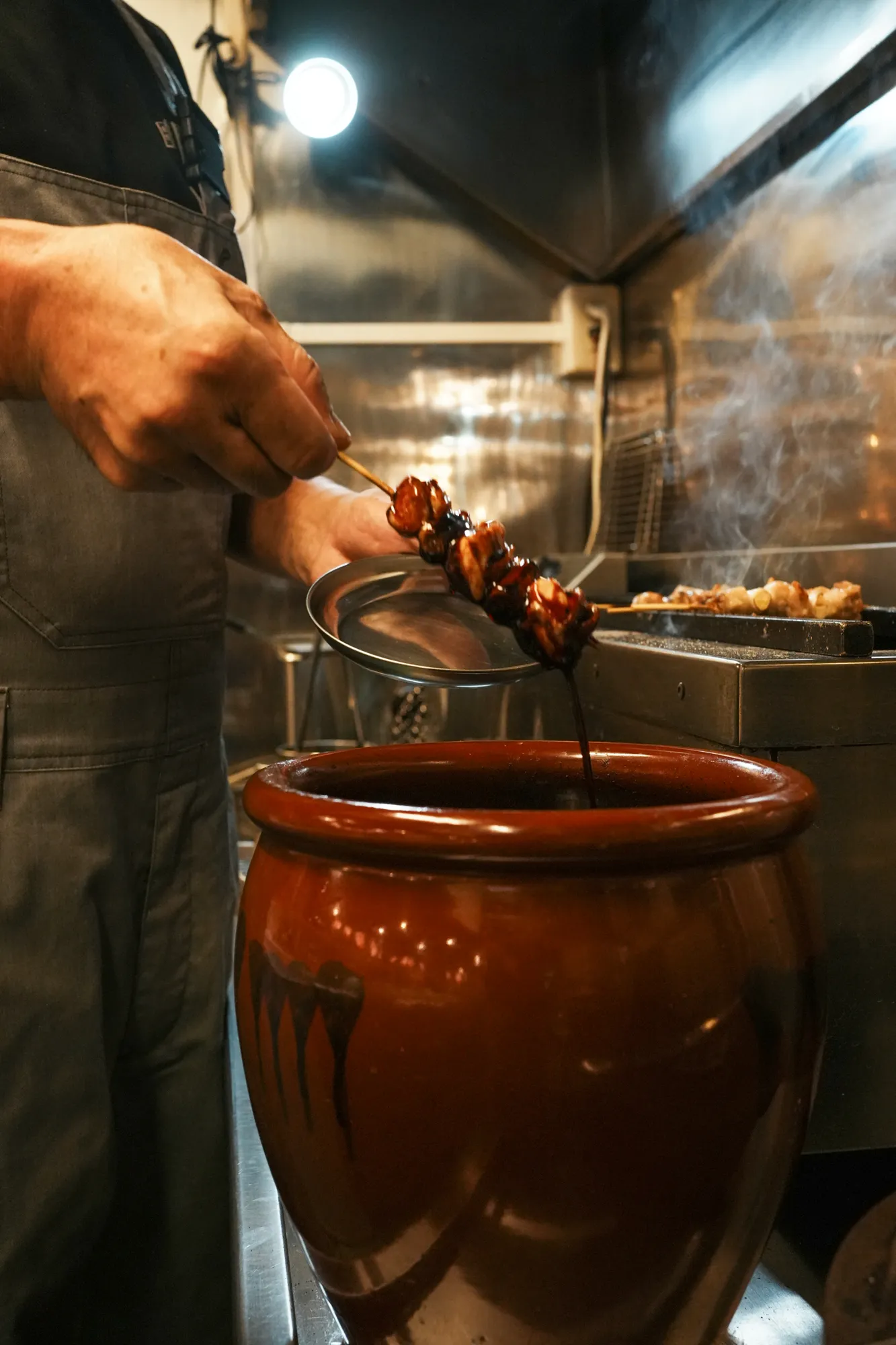
Tare (Sauce) for Yakitori
The instructor teaches the students a traditional recipe for tare (sauce) used in yakitori. Fresh tare is a simple, sweet sauce. However, by mixing it with aged tare, which absorbs flavors from daily use in grilling yakitori, the sauce develops a richer and more complex taste. This blending process allows the sauce to evolve and enhance over time, ensuring its continuous use.

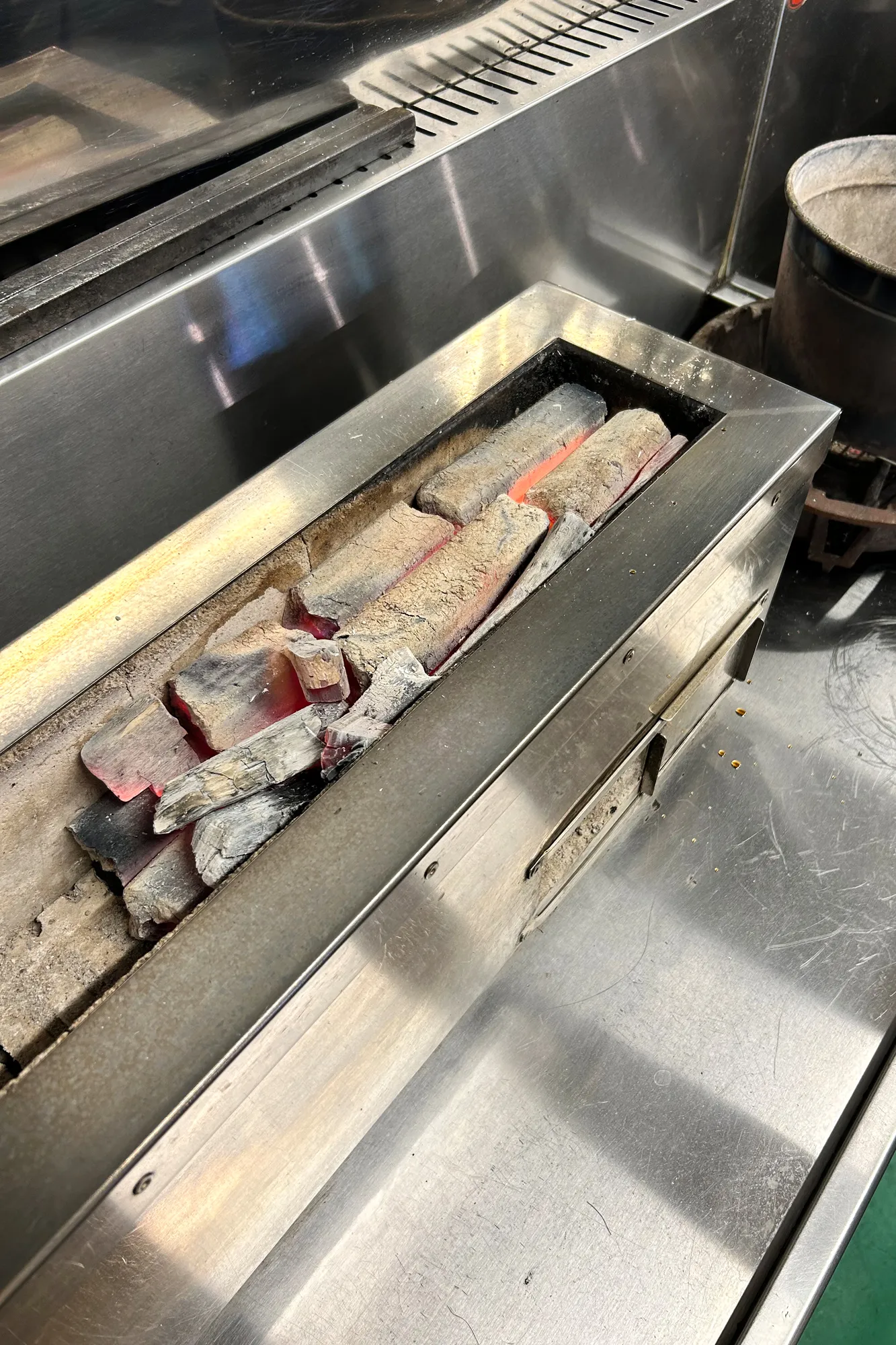
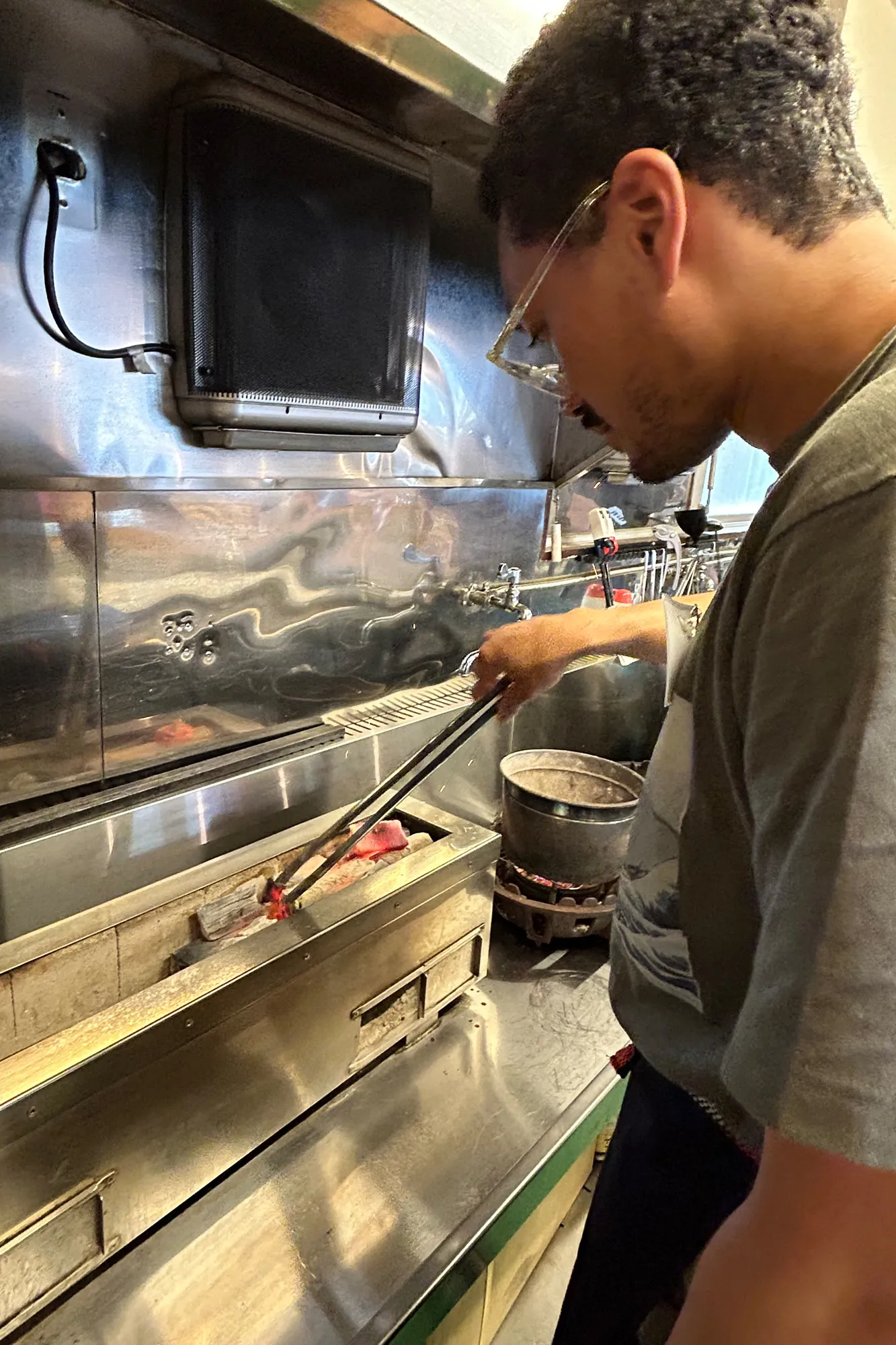
Proper arrangment of charcoals In charcoal grilling, adjusting heat automatically is not possible. Therefore, it is crucial to understand how to arrange the charcoals and control the heat during grilling. In the first few days of the course, the instructor demonstrates both effective and ineffective charcoal arrangements, illustrating how improper arrangements can lead to uncontrollable heat. Following these demonstrations, the students practice arranging the charcoals and controlling the heat under the instructor’s guidance.

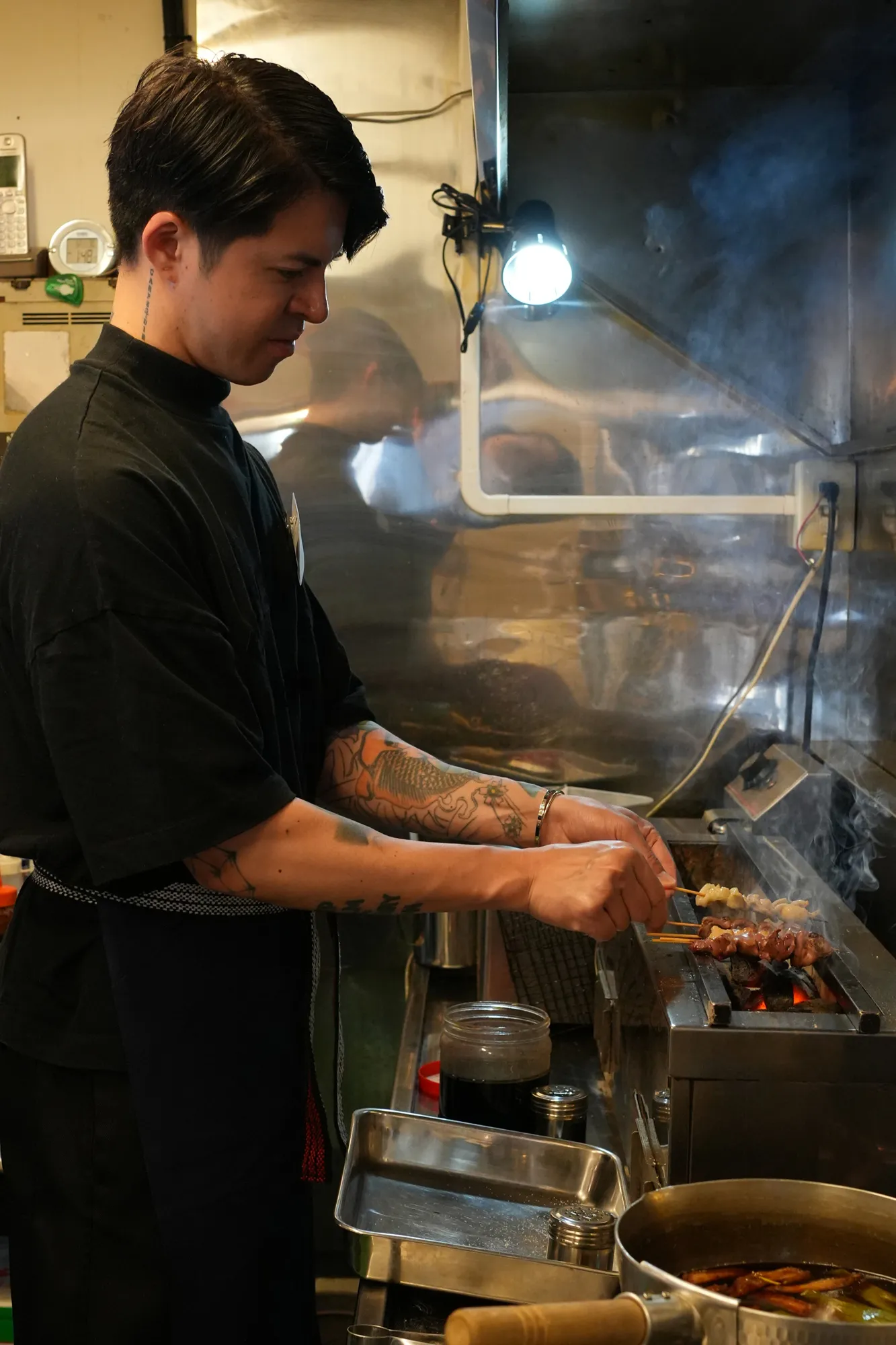
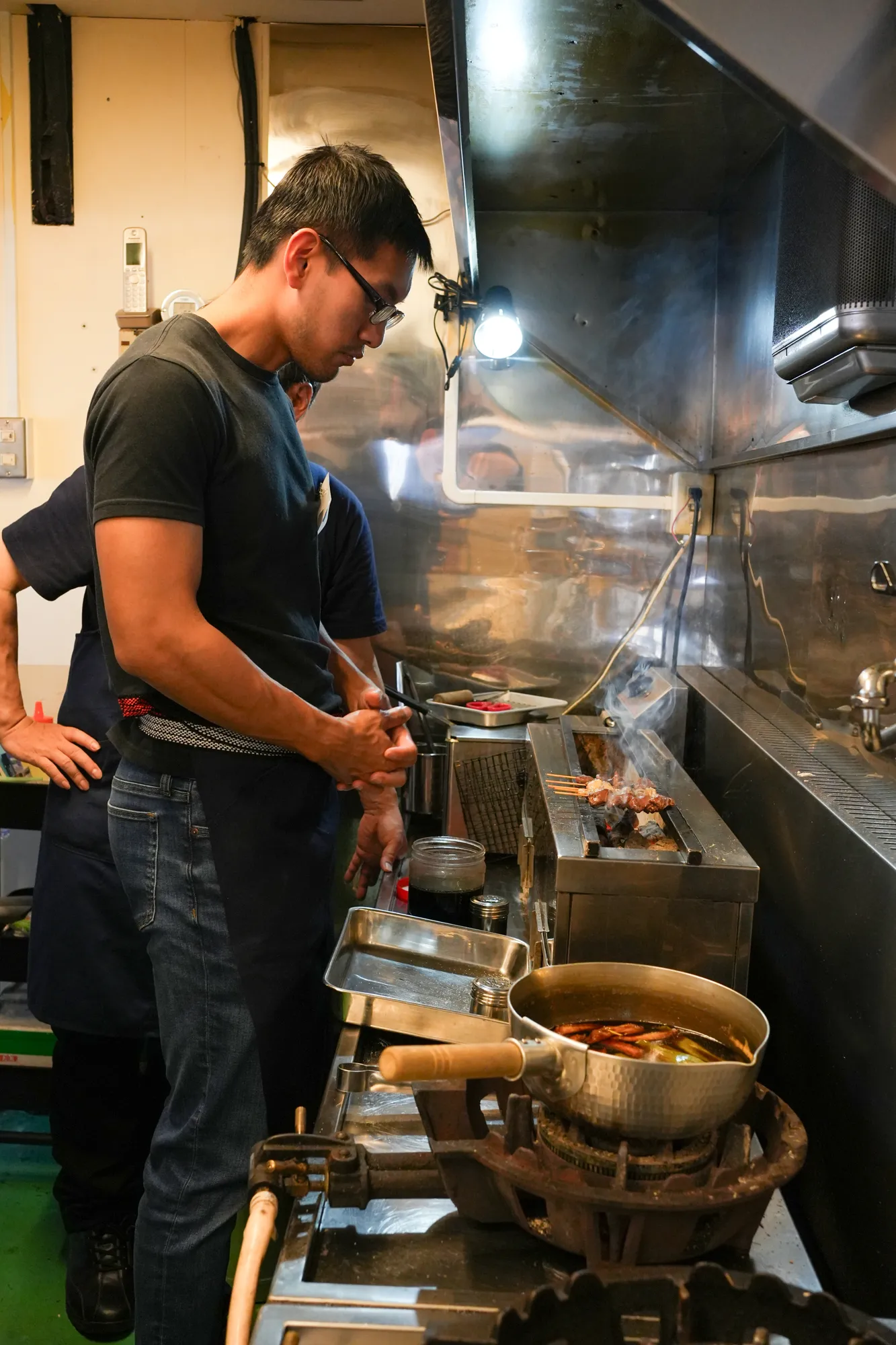
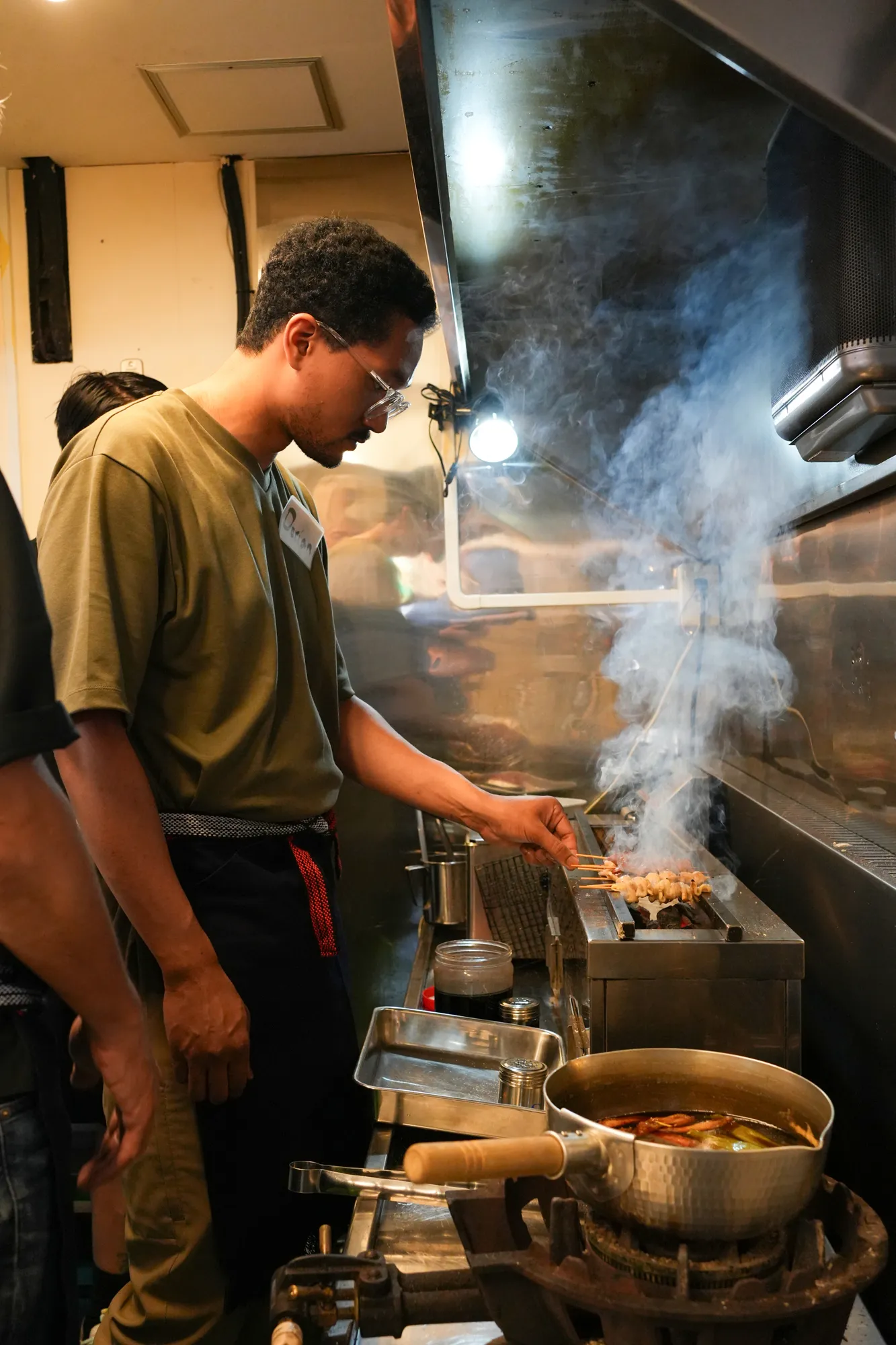

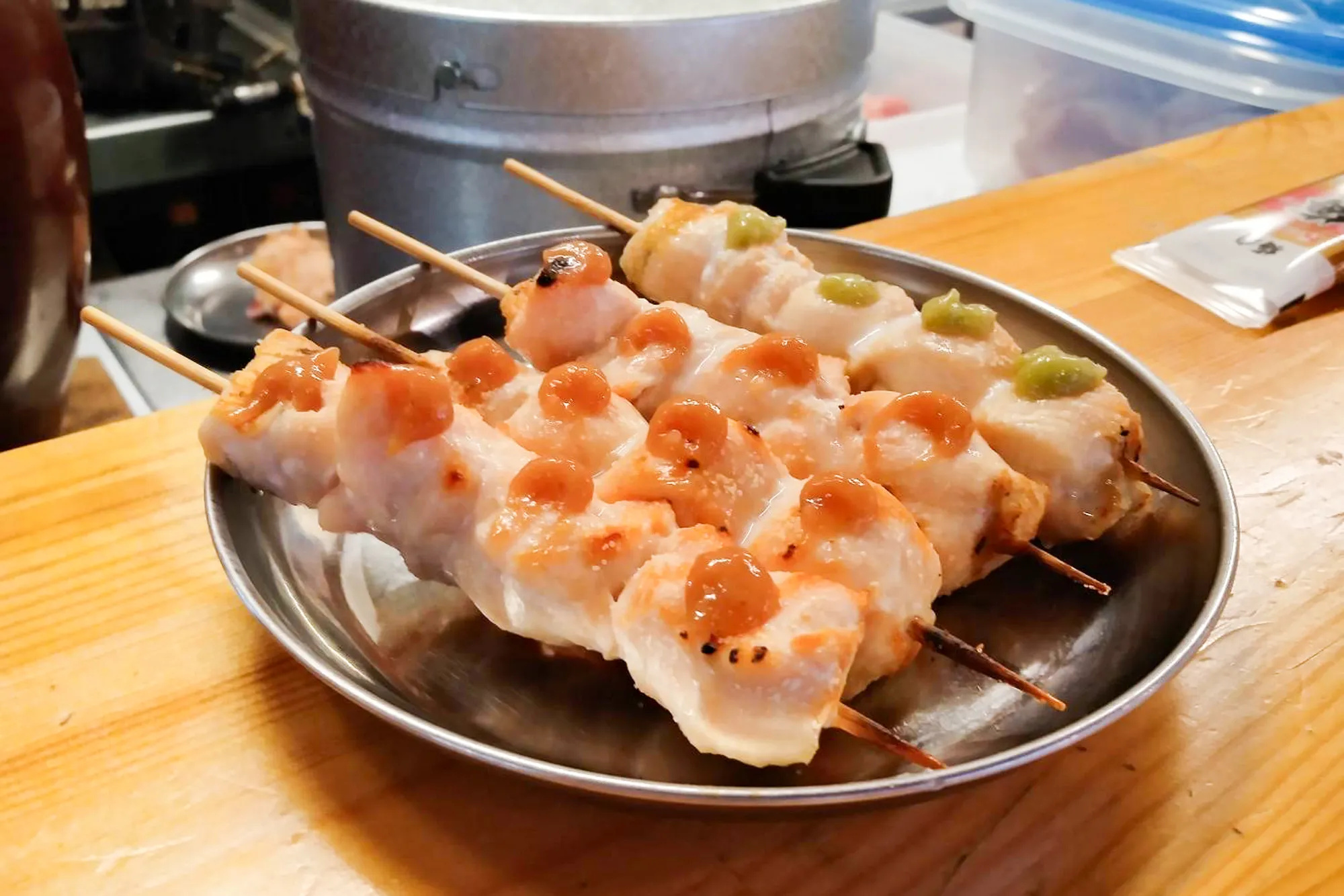

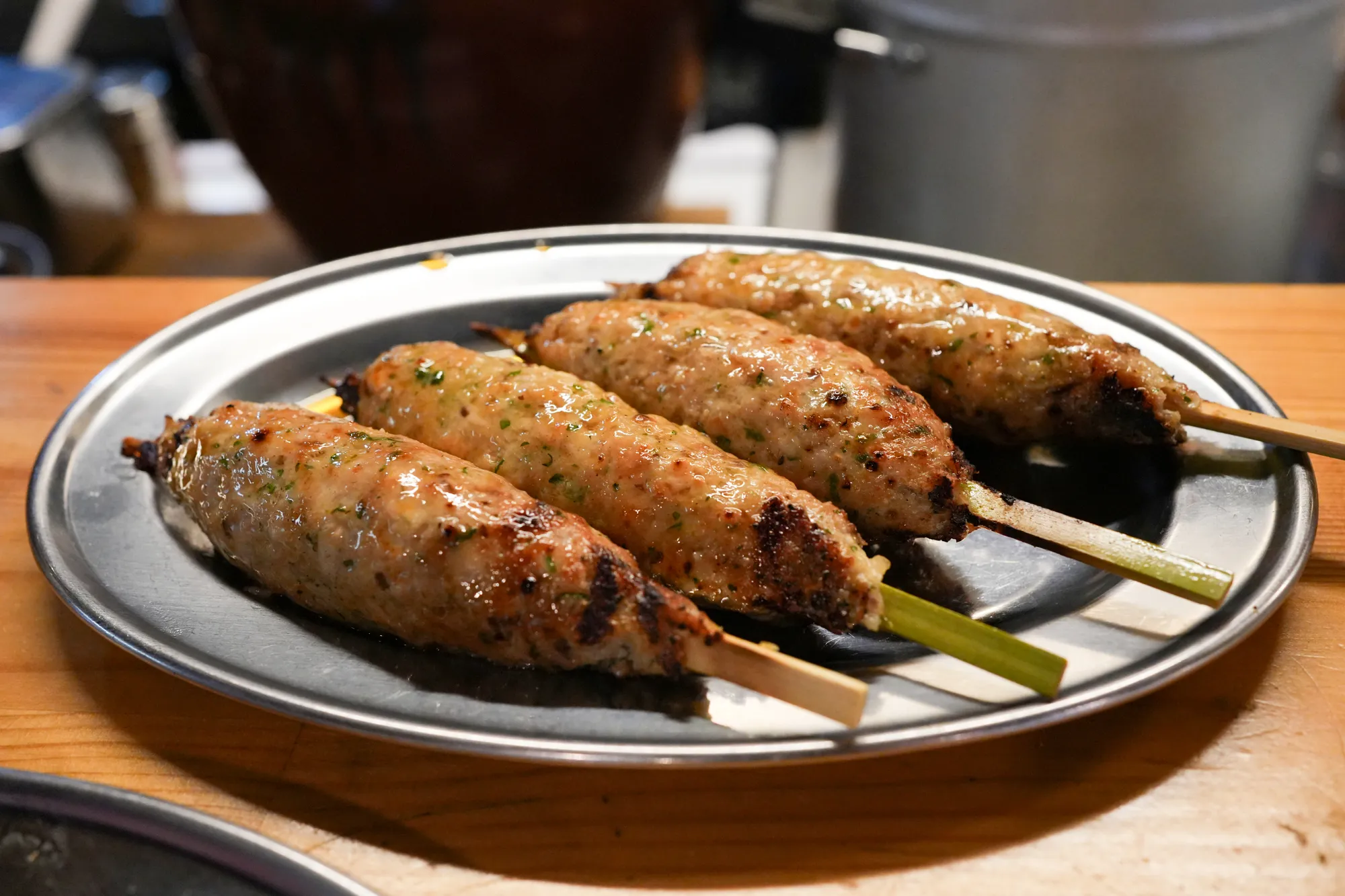
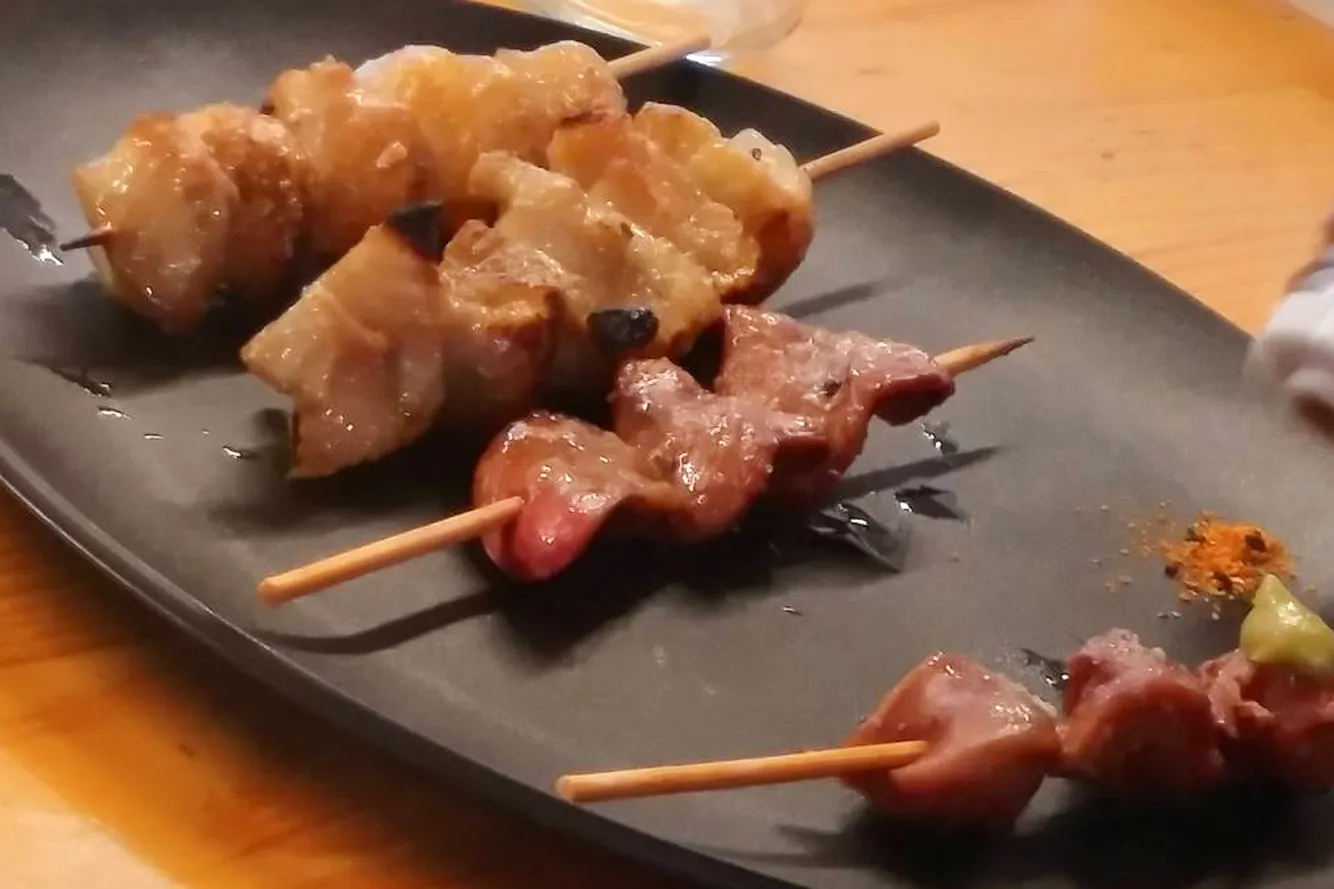
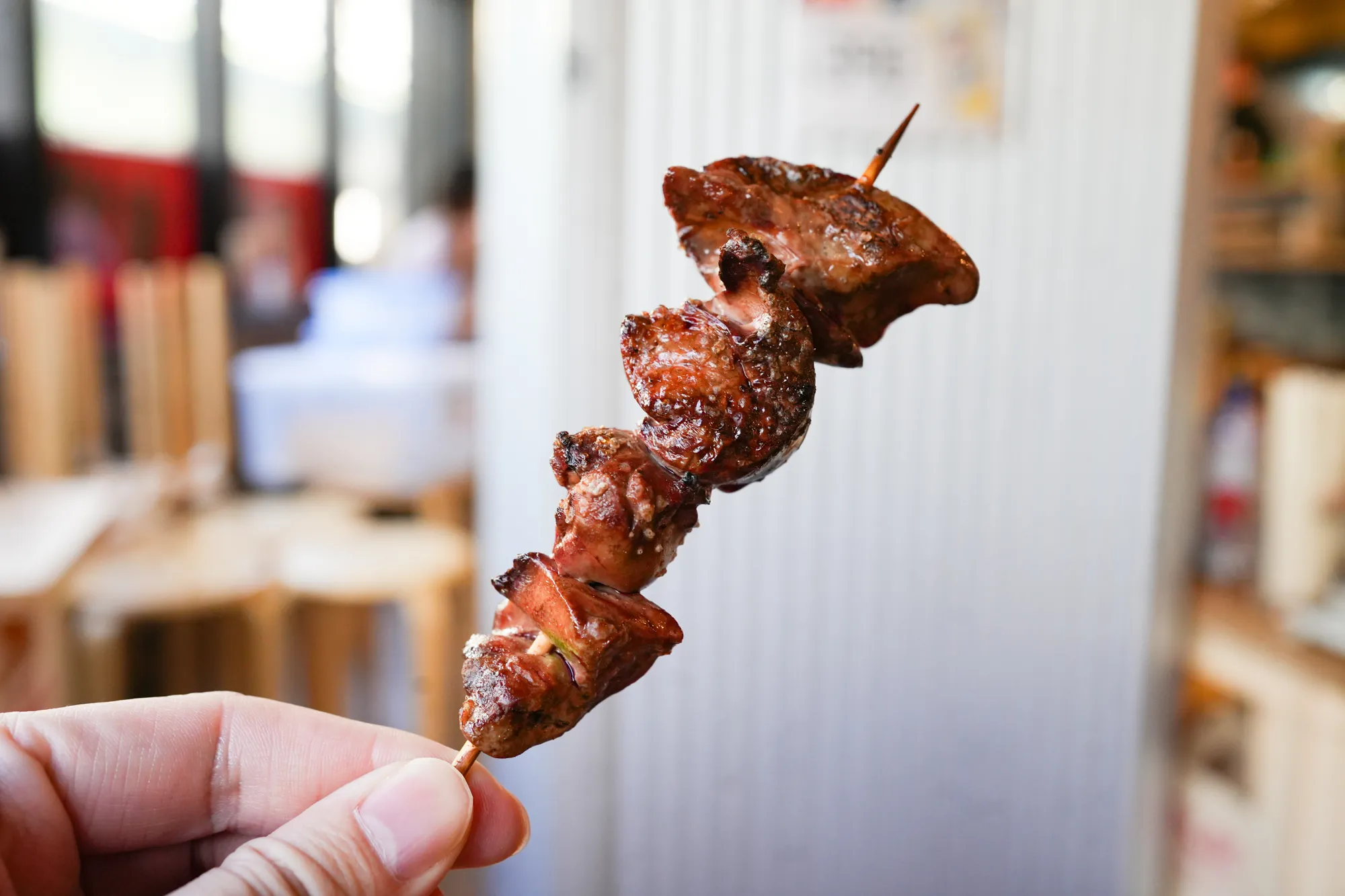
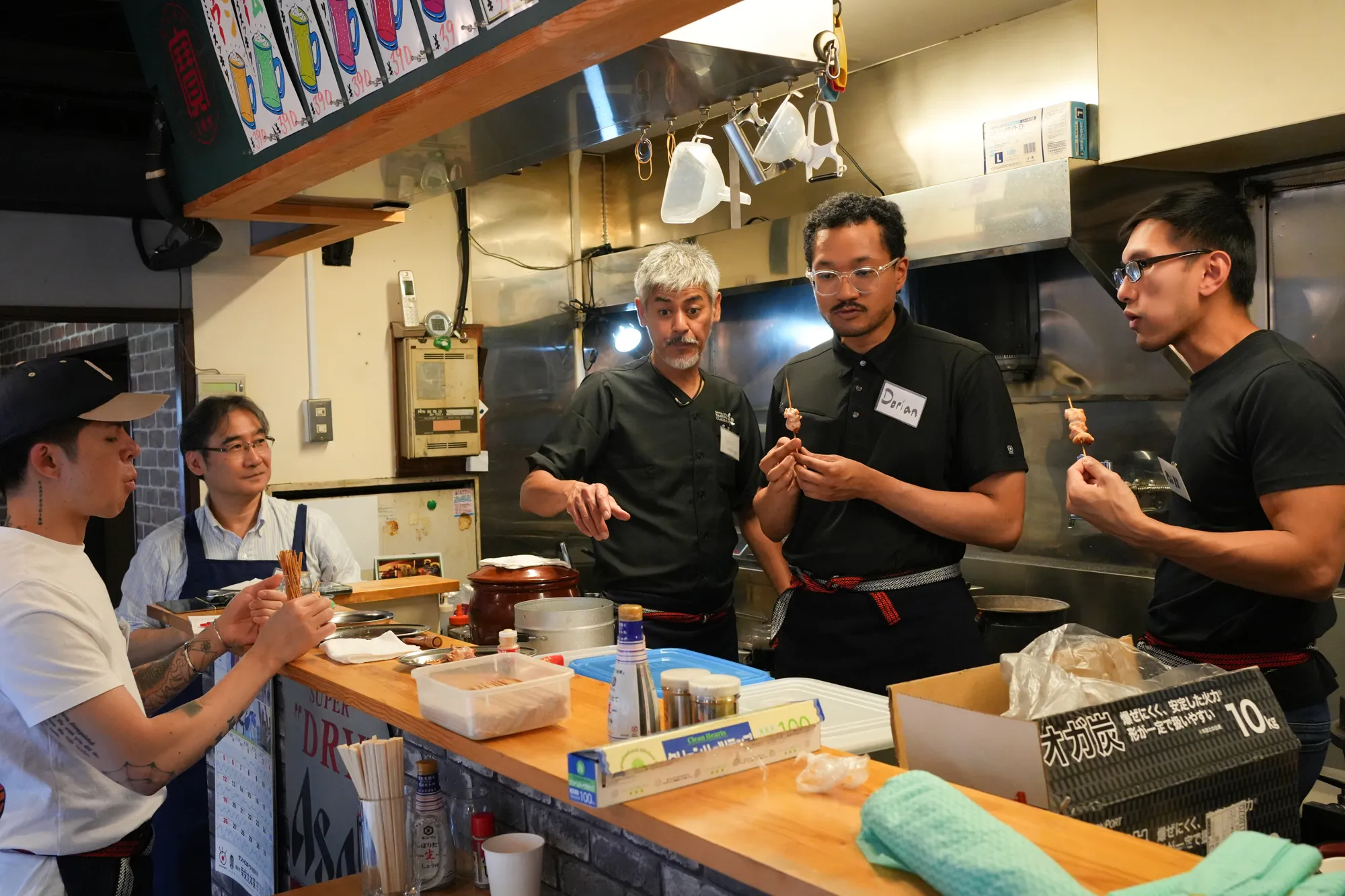
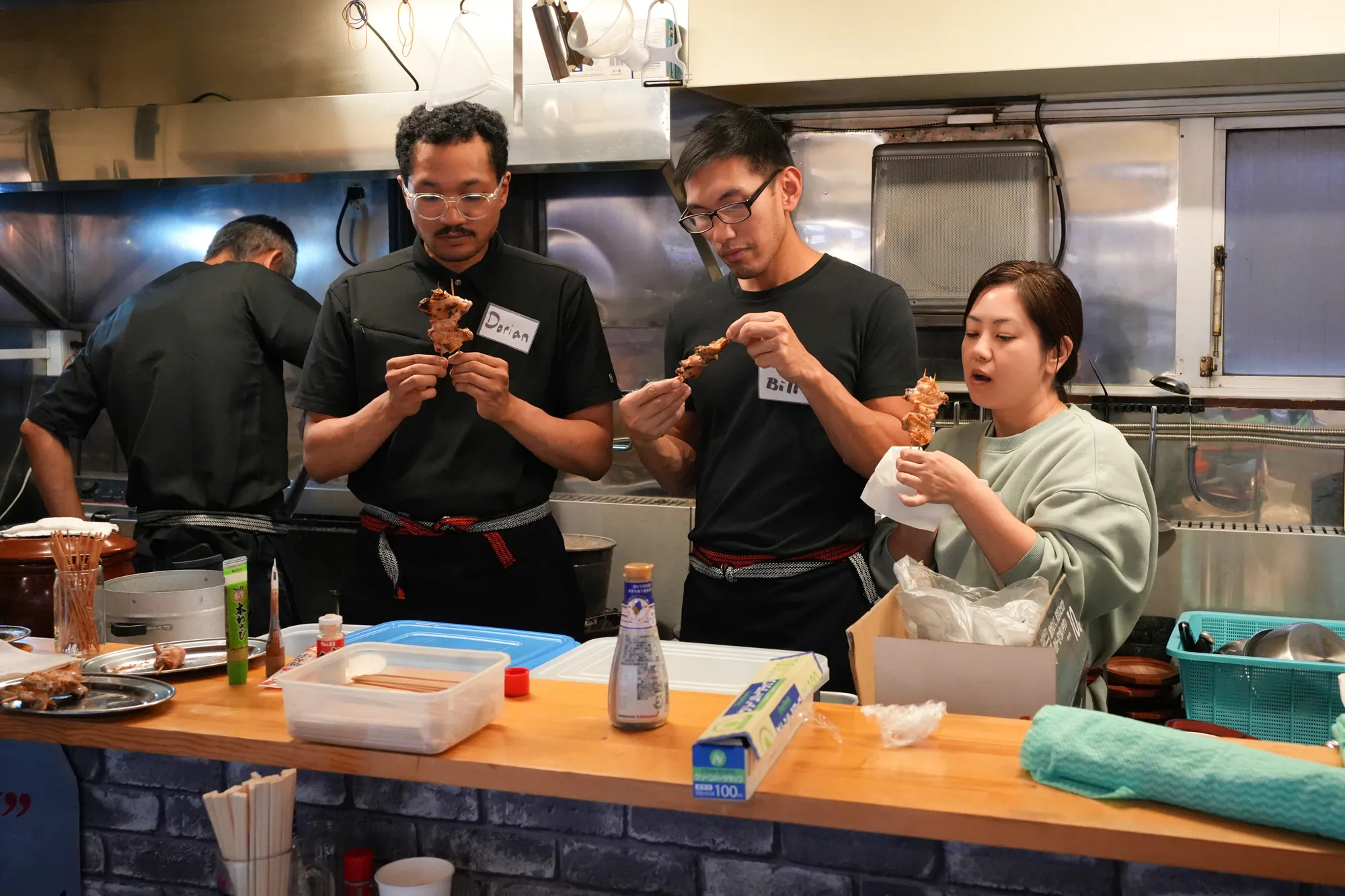
Grilling and tasting
The students take turns grilling yakitori under the instructor’s guidance. One student places an order, and another grills the ordered yakitori, simulating a restaurant setting. They seem to enjoy grilling more than preparing the food. They monitor the heat intensity, move the yakitori as needed, adjust the charcoal positions, and open or close the griller vents to prevent overcooking. They also learn how to determine when the yakitori is ready to eat. Once the yakitori is grilled, the other students taste it with condiments like red pepper, wasabi, ume (plum paste), or mentaiko (spiced salted cod roe).
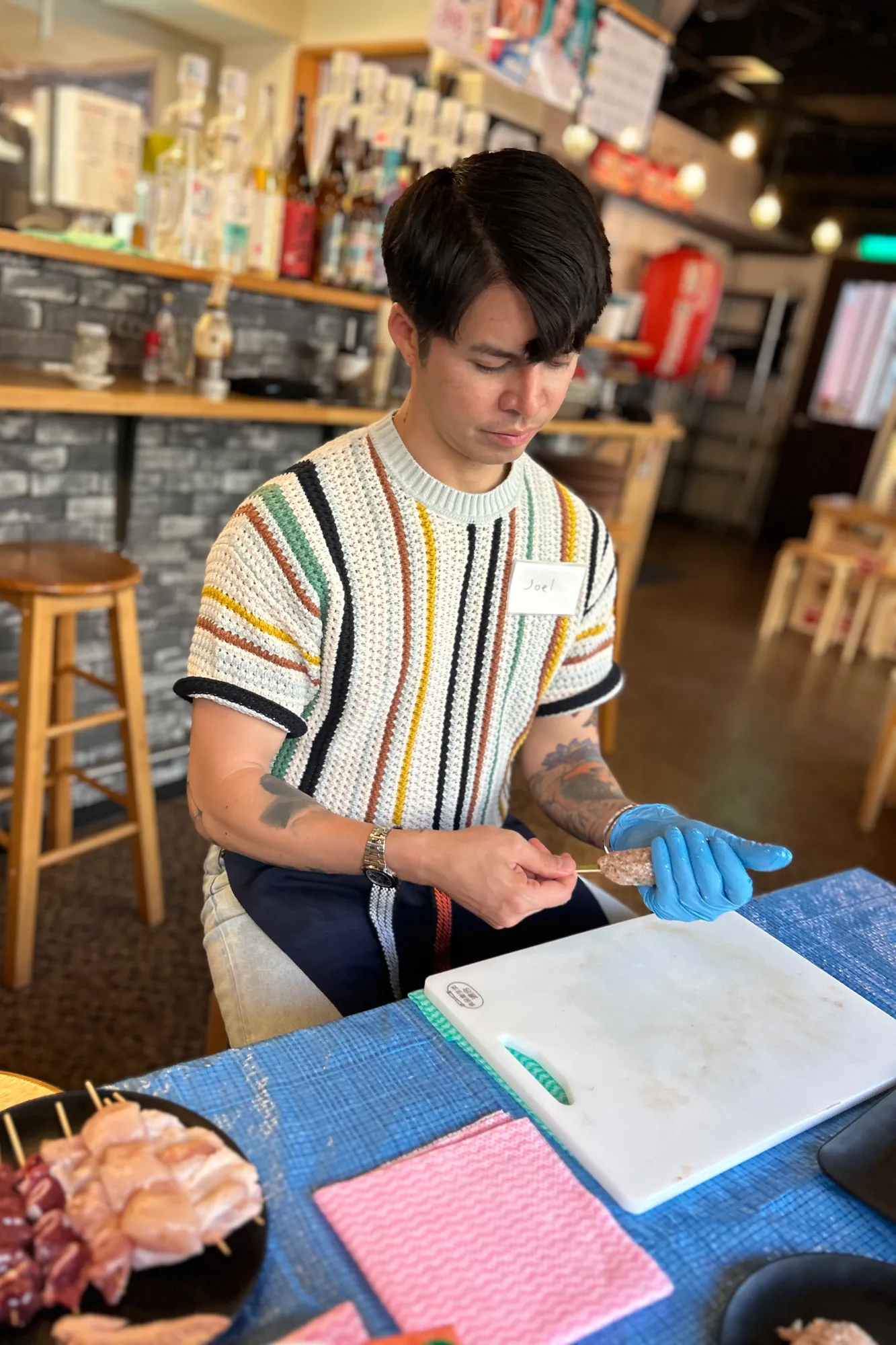
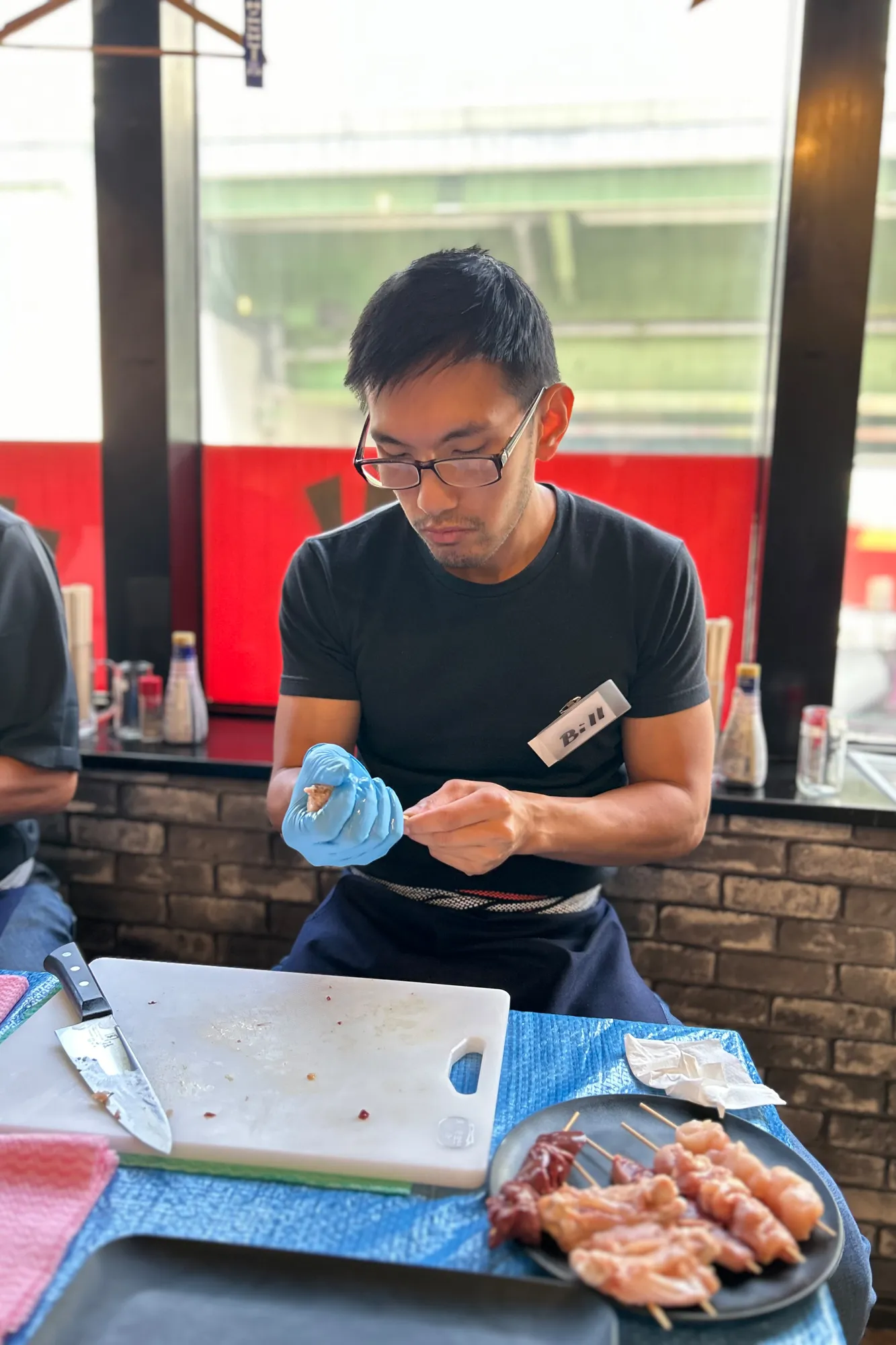
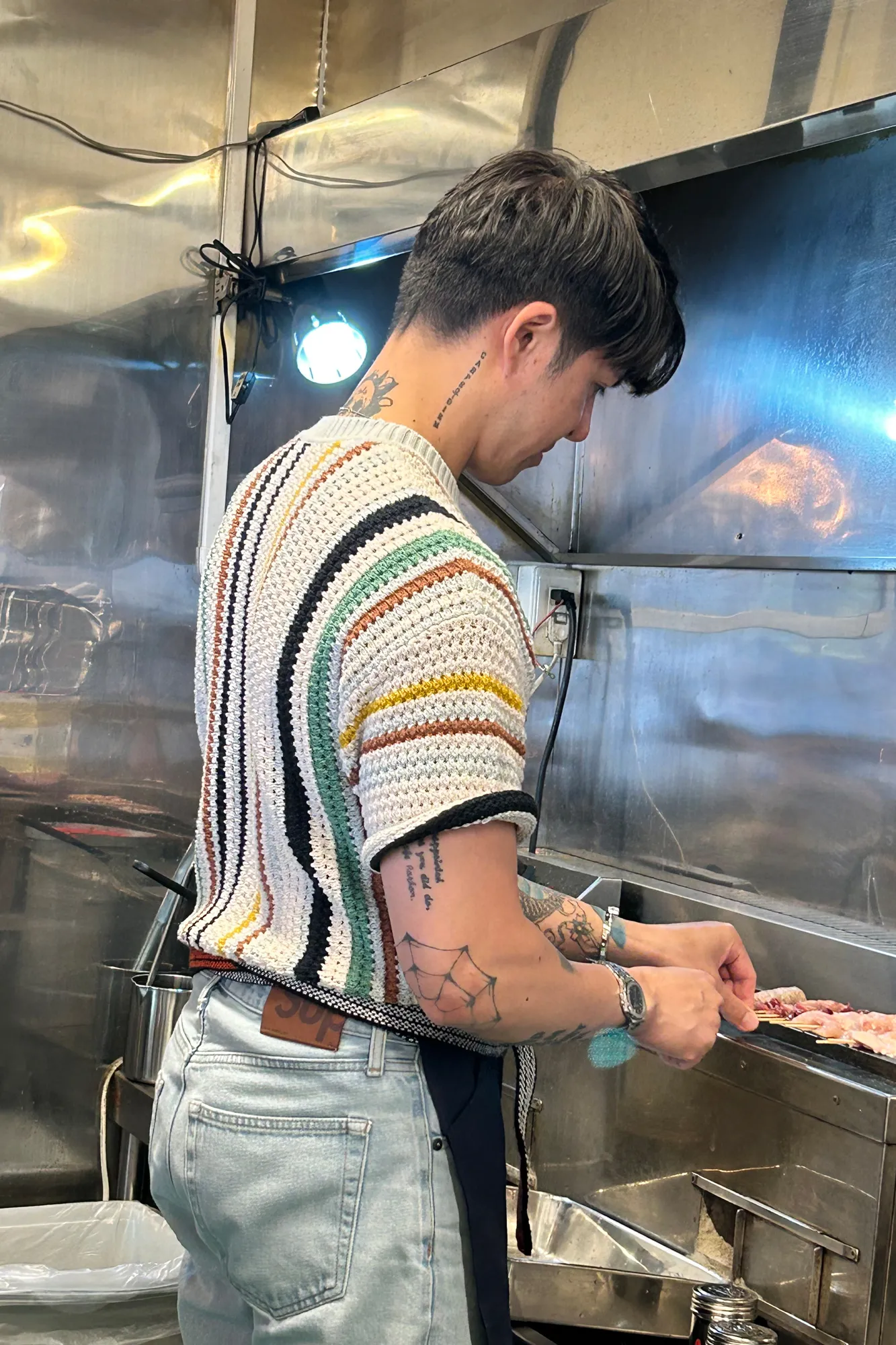

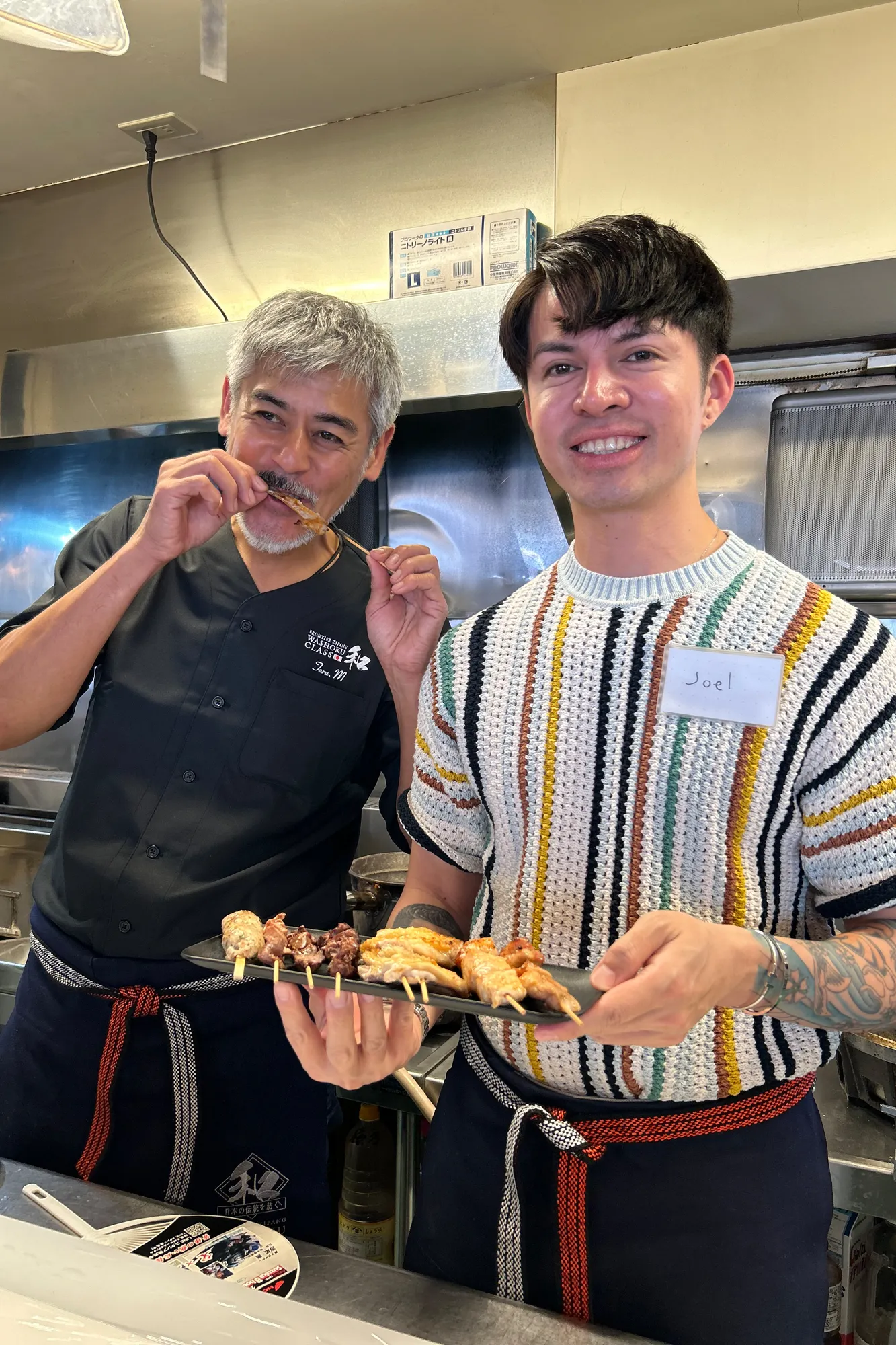
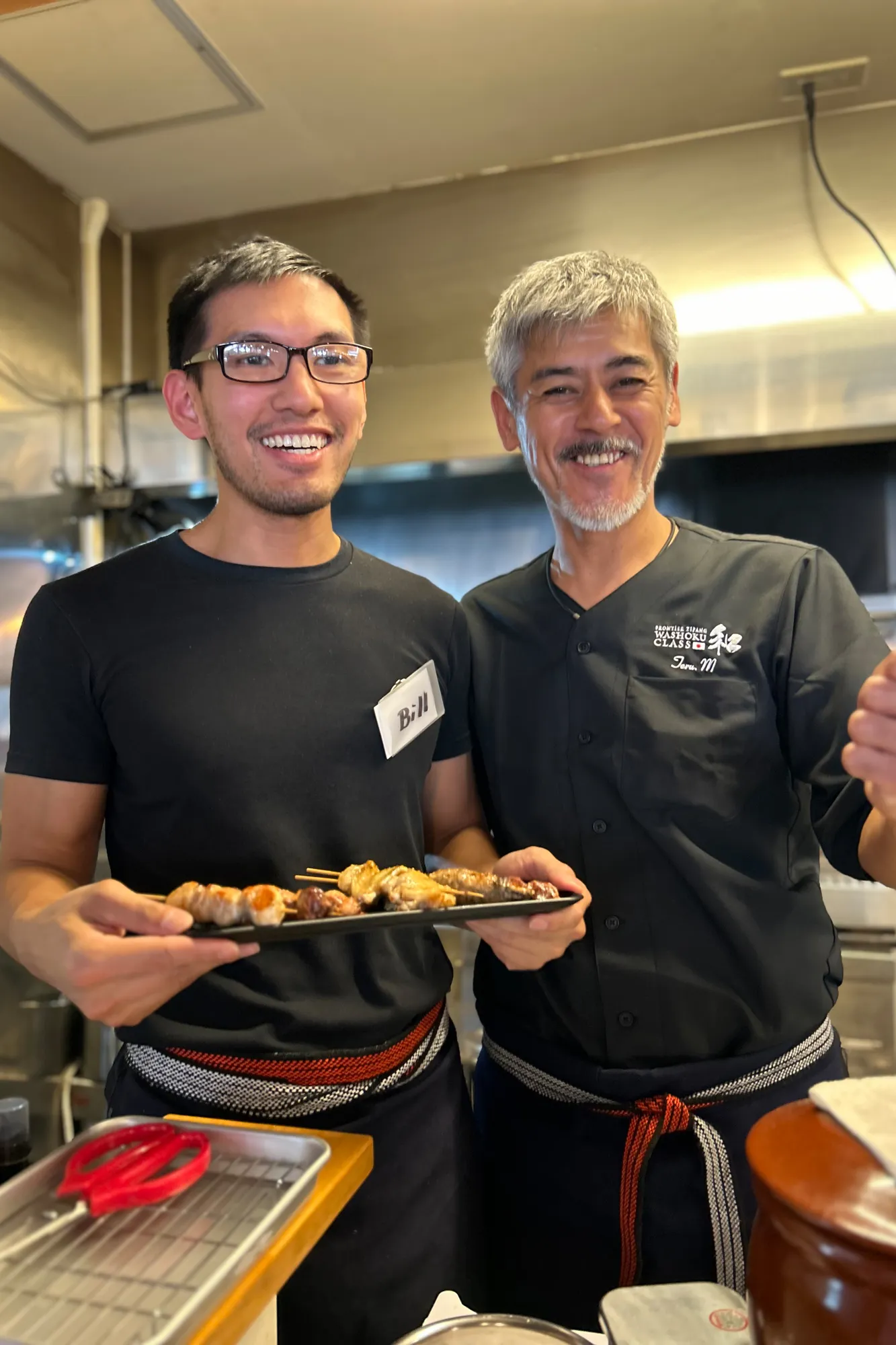
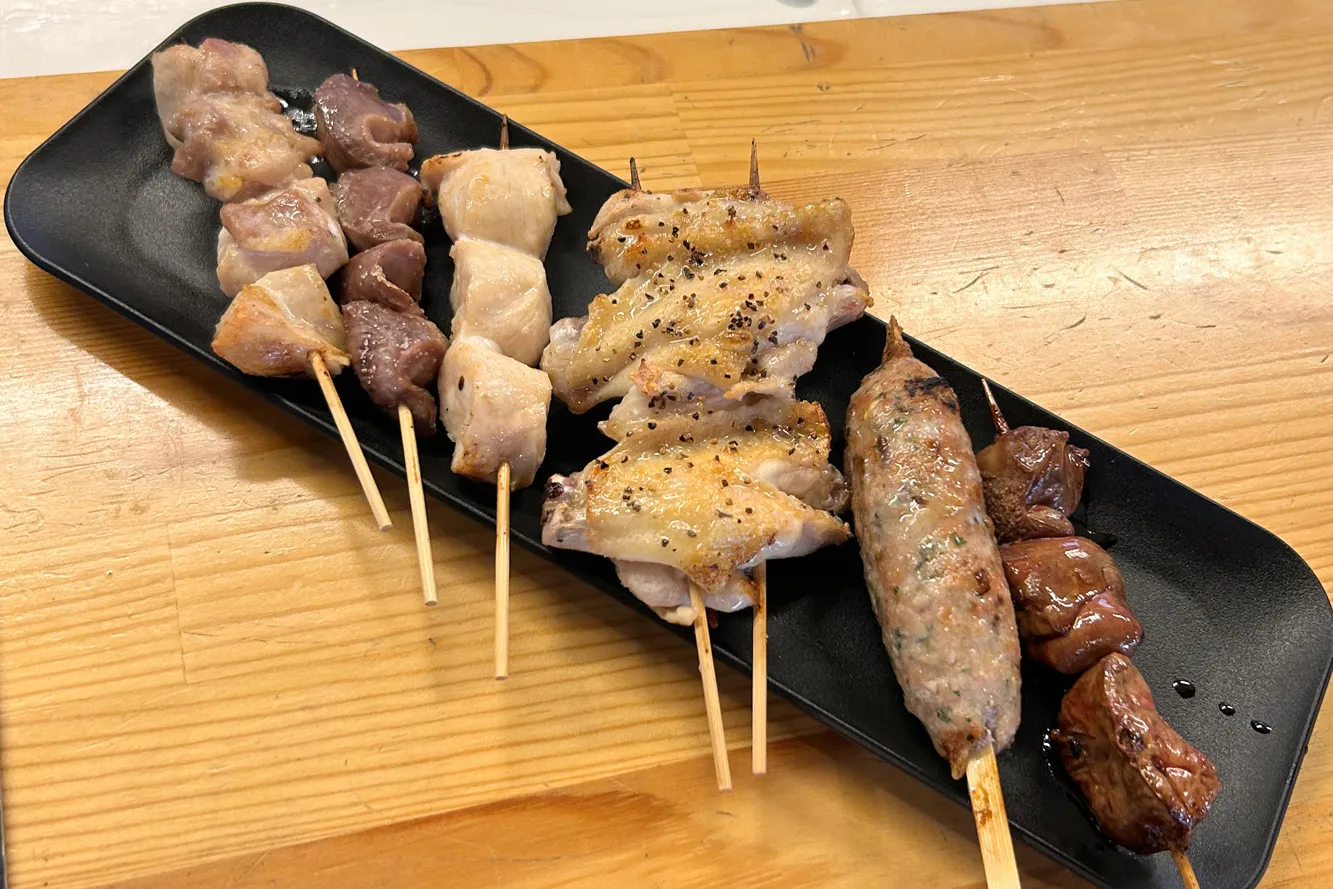
Finale
On the final day, the students are tasked with cutting, skewering, and grilling ‘tebasaki’ (chicken wing), ‘mune’ (chicken breast), ‘sunagimo’ (gizzard), Liver, ‘Hatsu’ (heart), and ‘tsukune’ (minced chicken) as a graduation examination. We regret that Dorian san cannot attend the final lesson due to illness. The instructor is delighted to see them work meticulously and demonstrate the skills they have learned throughout the course.
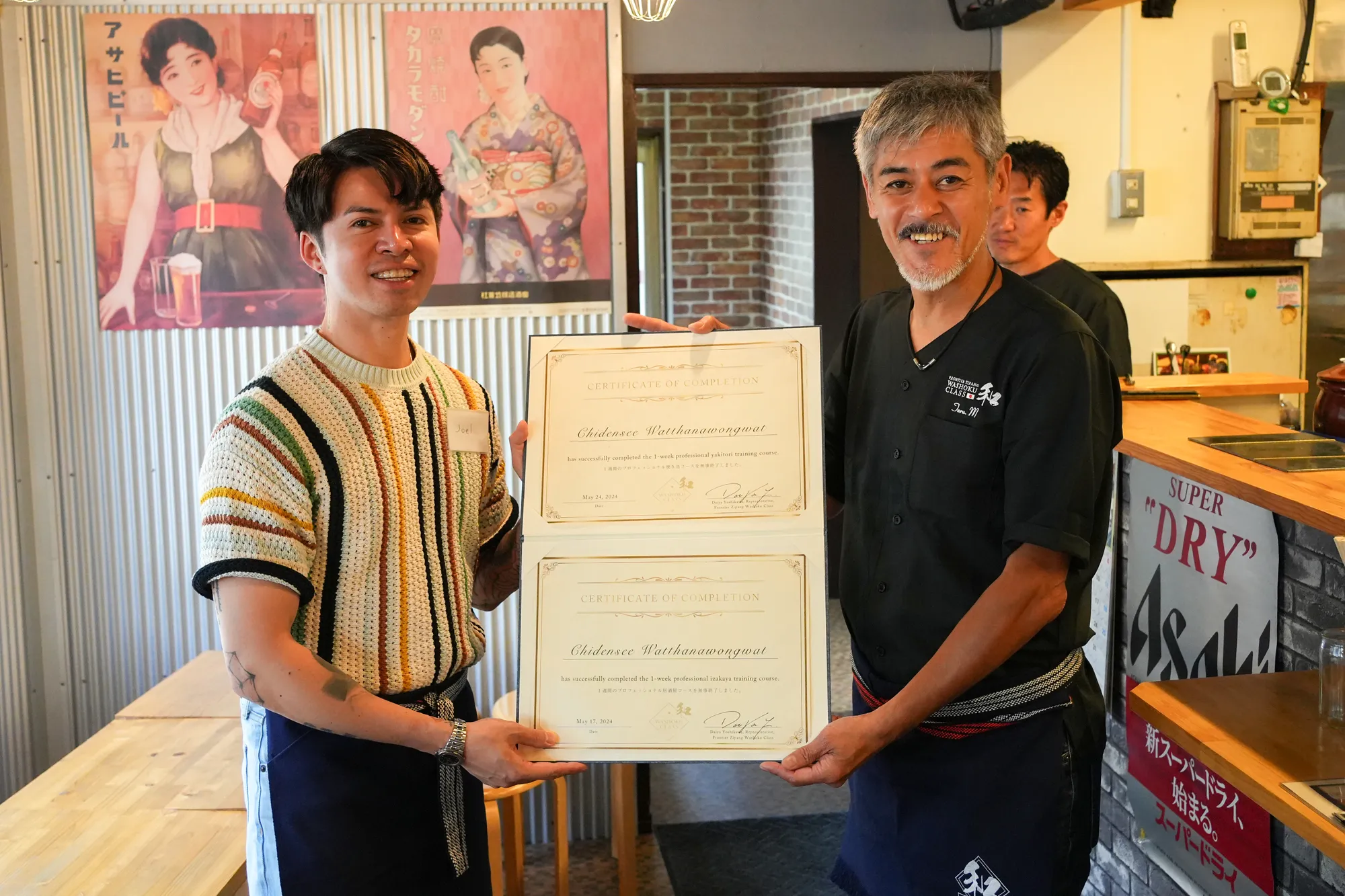
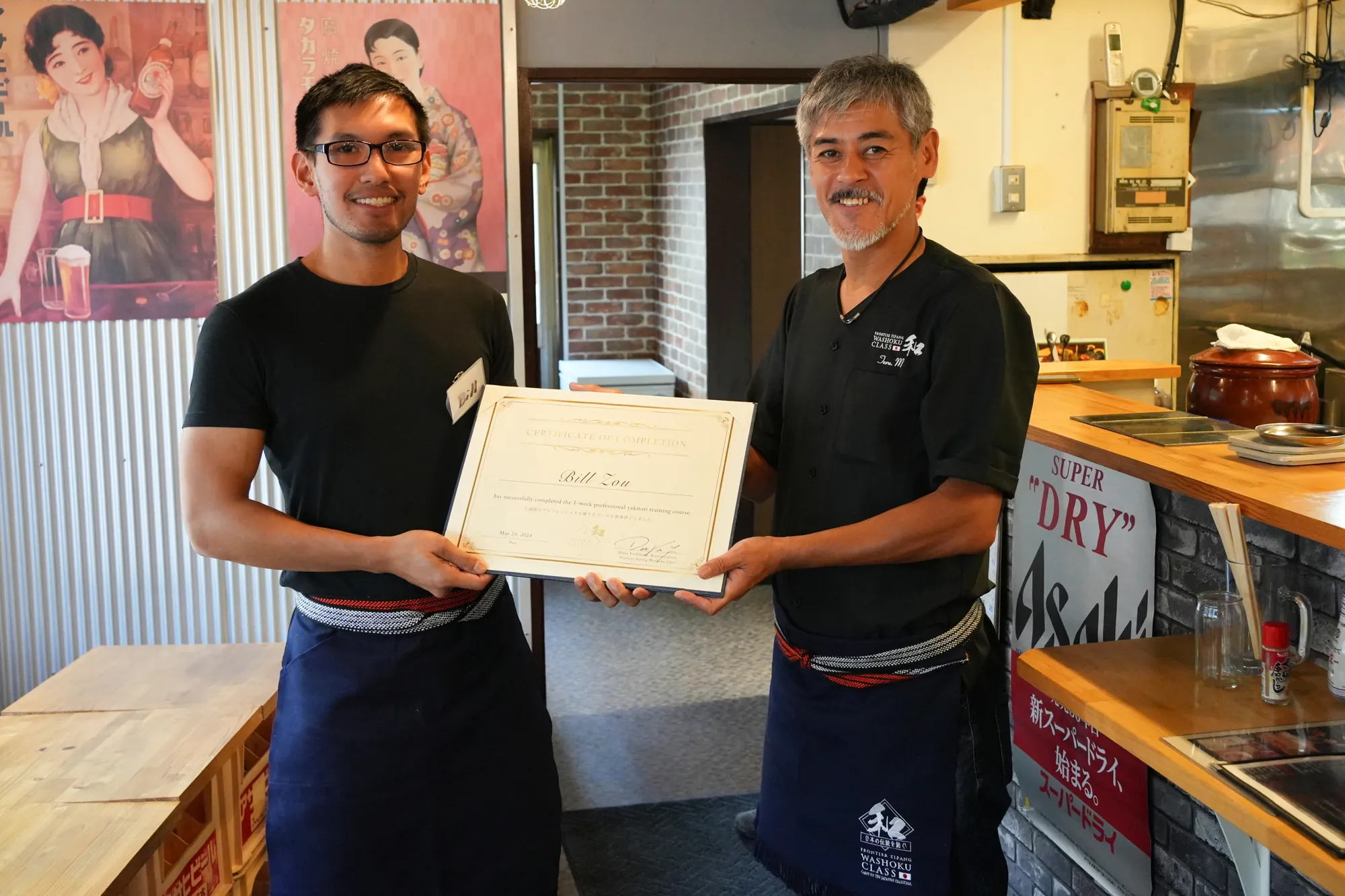
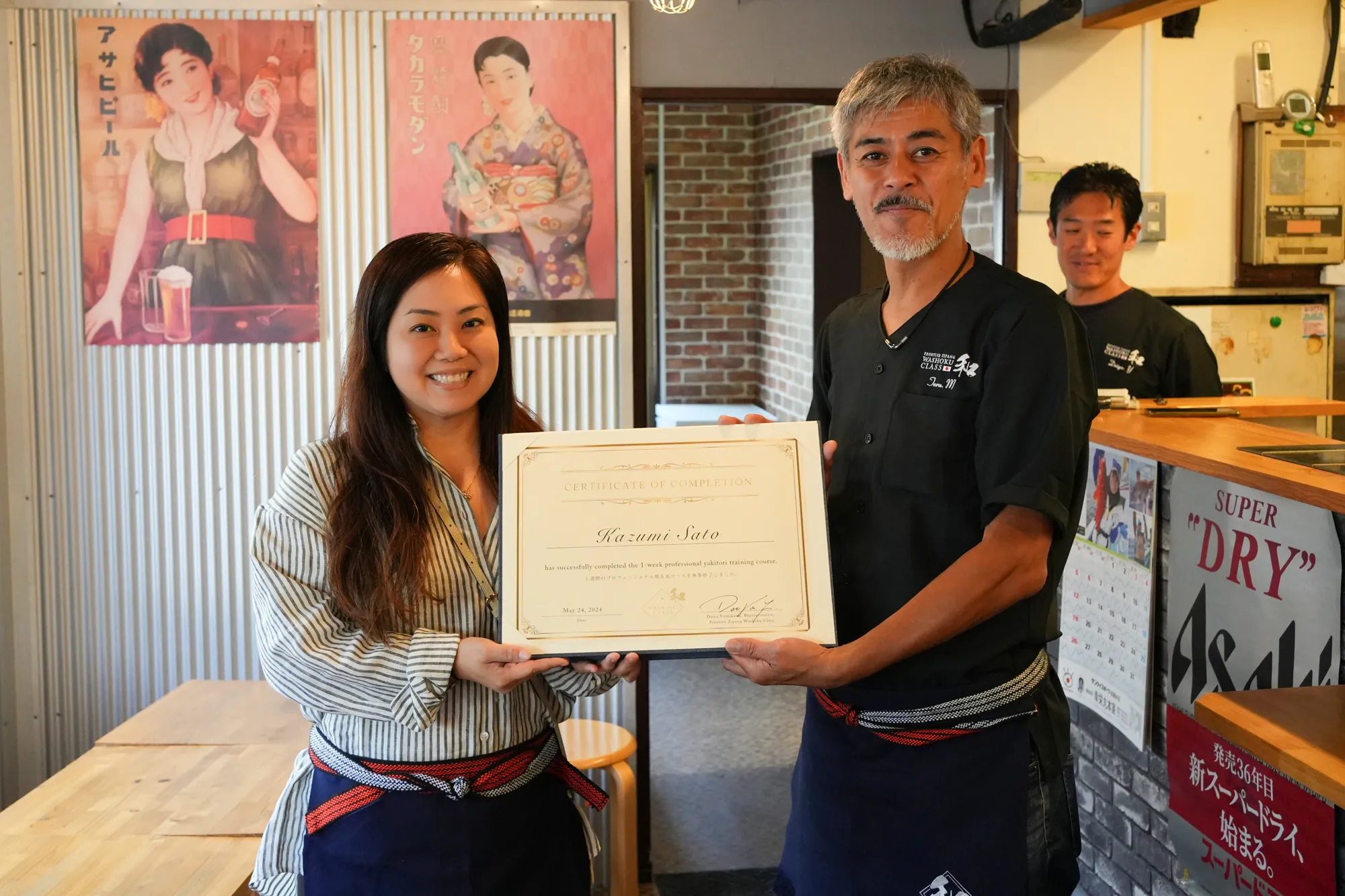
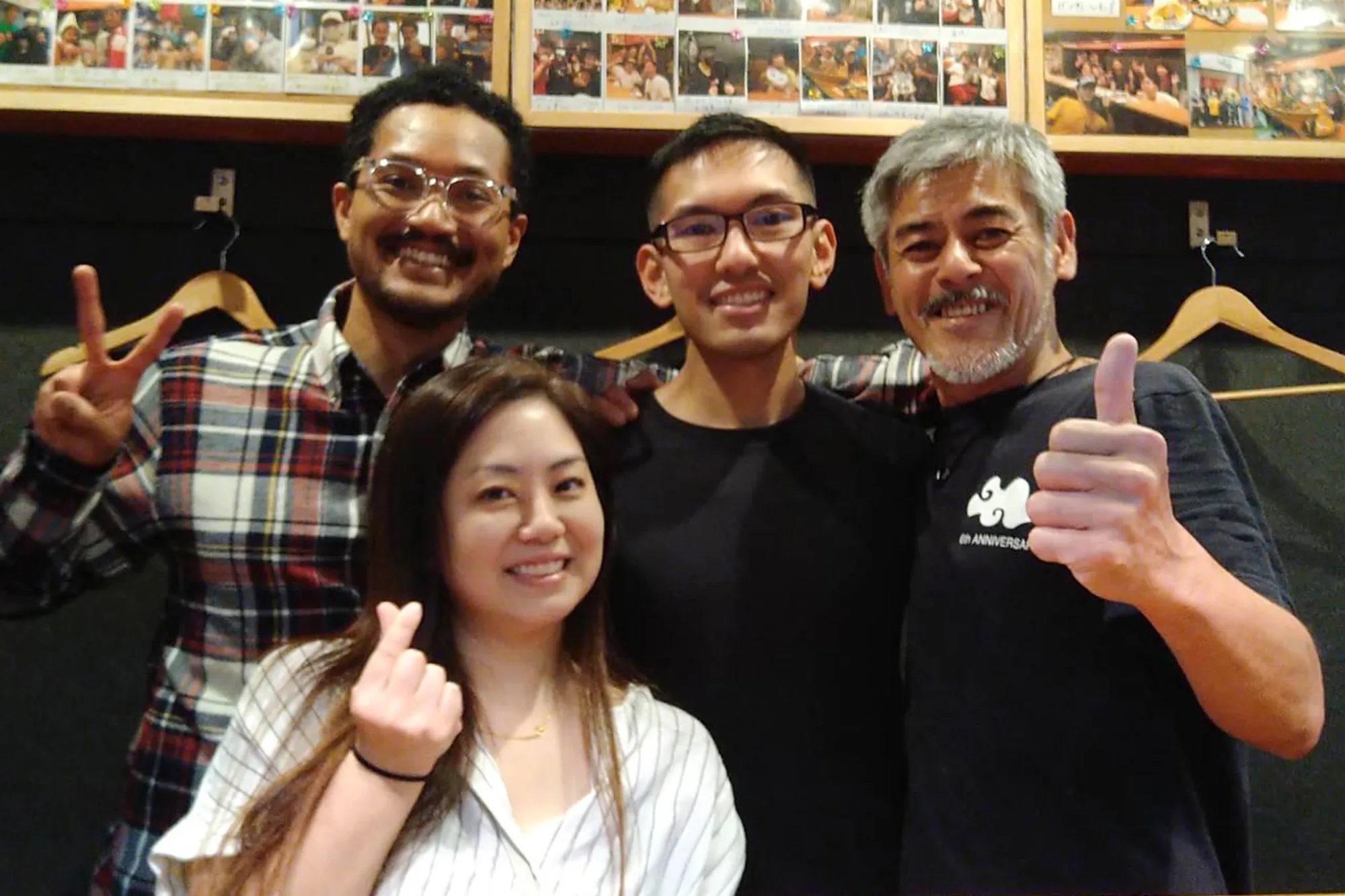
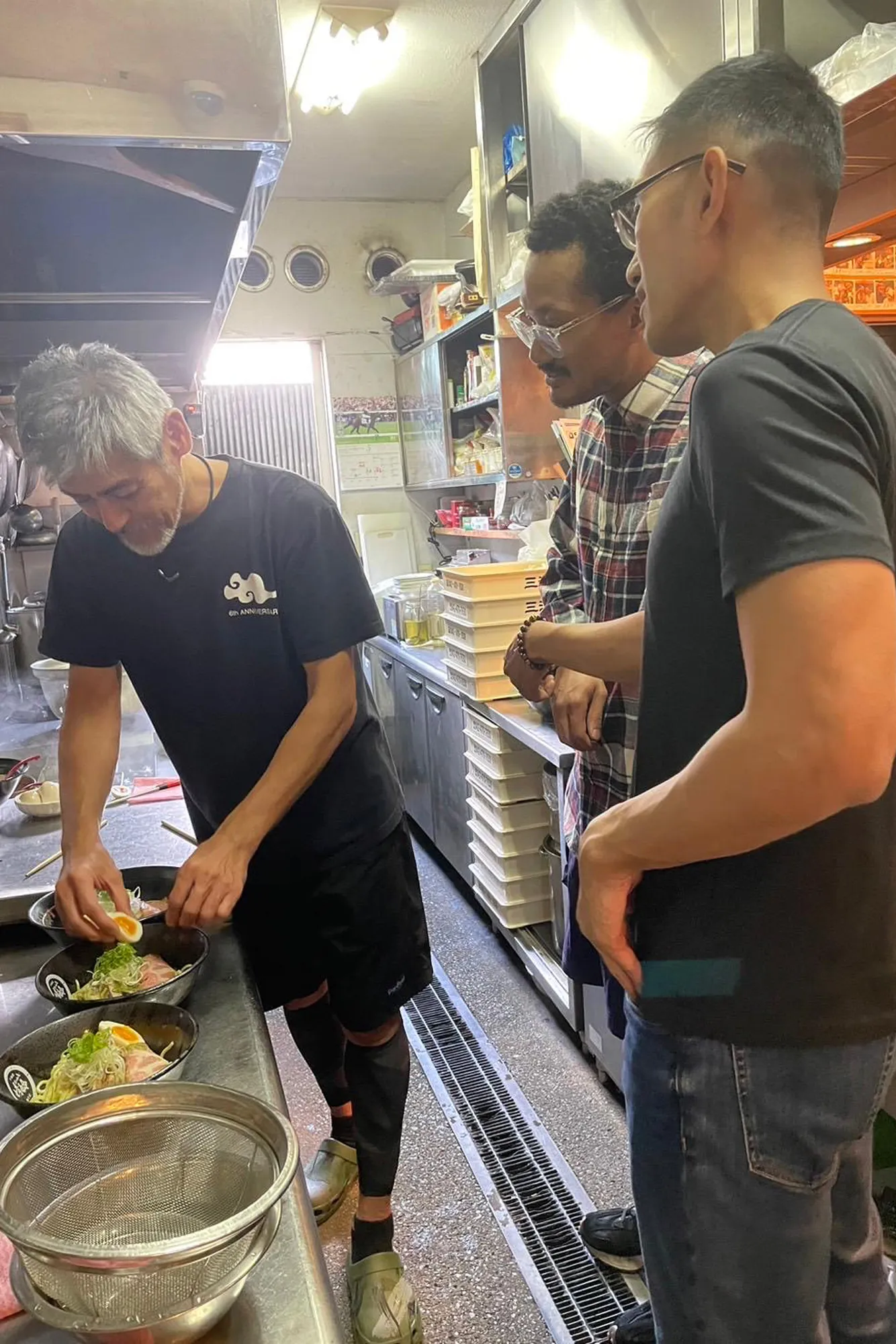
P.S.
The day after completing the Yakitori Course, Bill san, Kazumi san, and Dorian san visits Tombo, the Aburasoba restaurant run by the instructor. We are very pleased that Dorian san recovered in just one day. Thank you very much!
